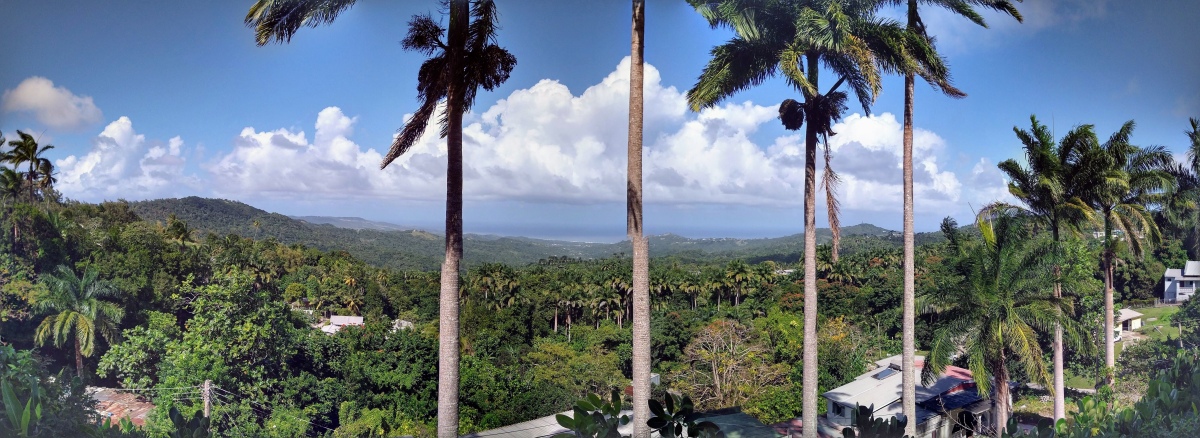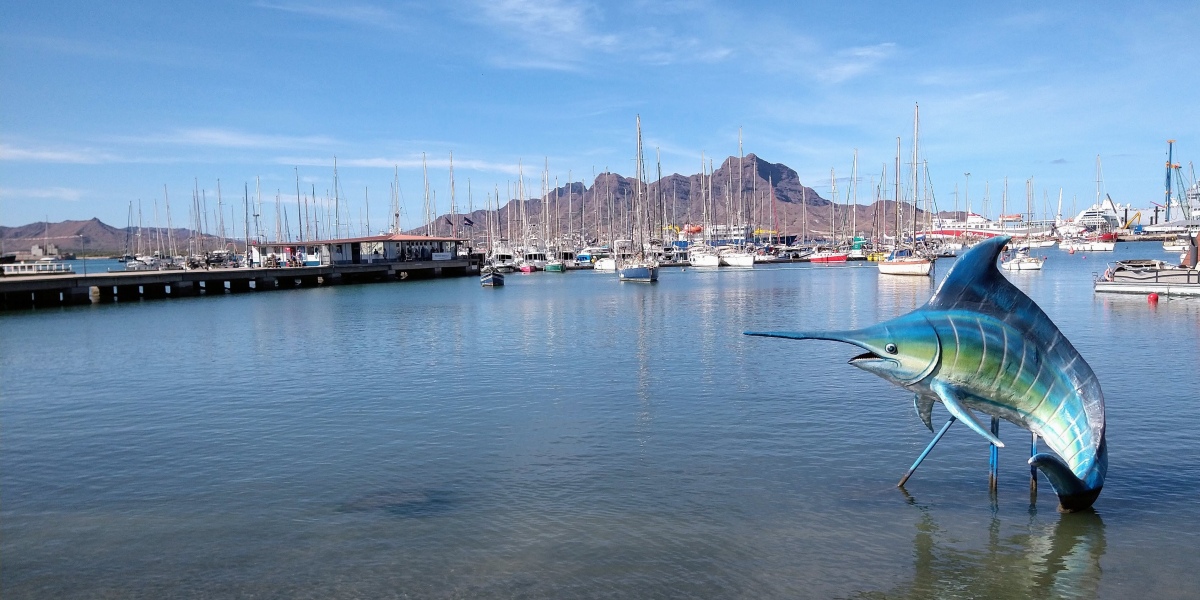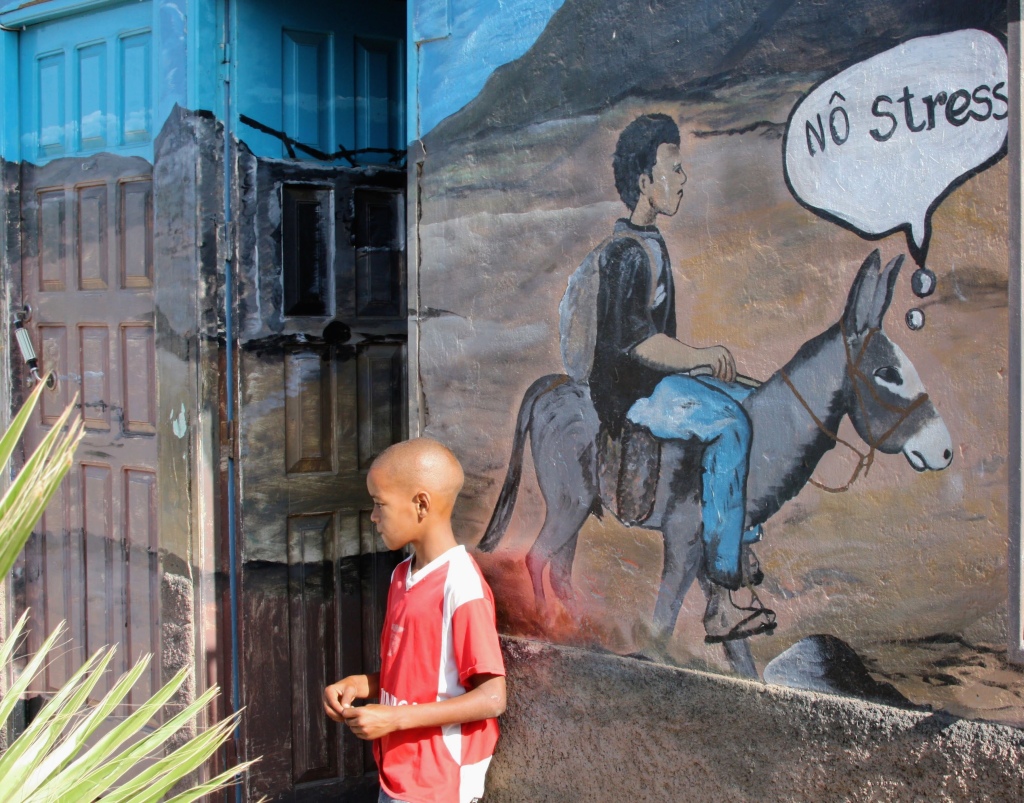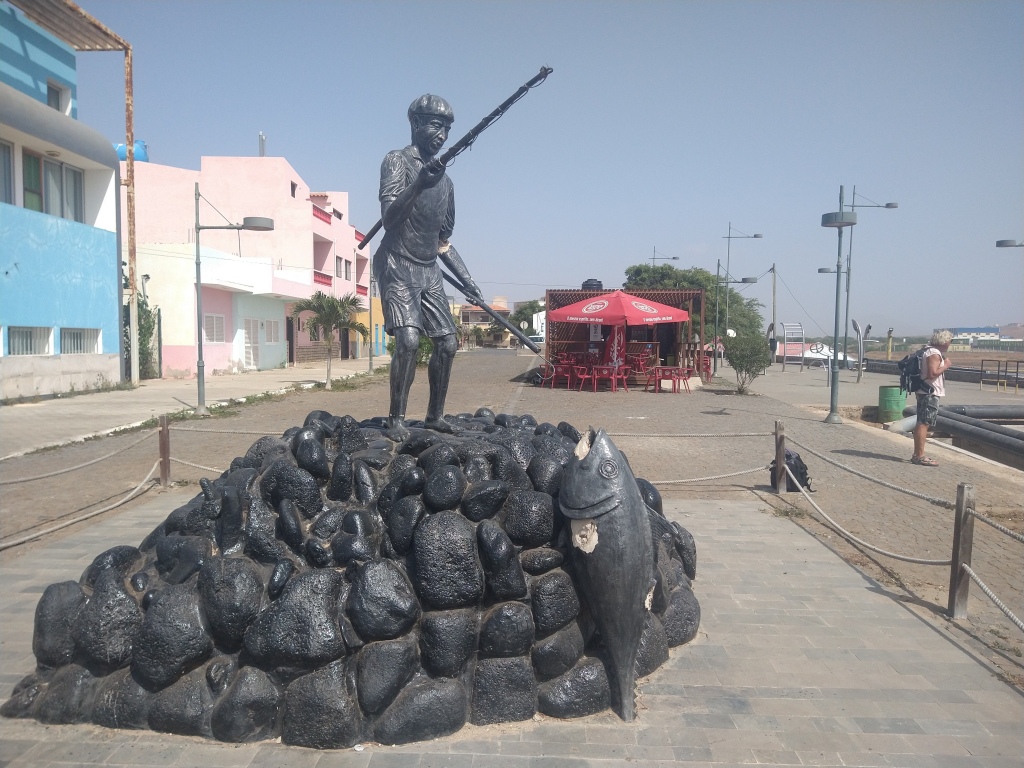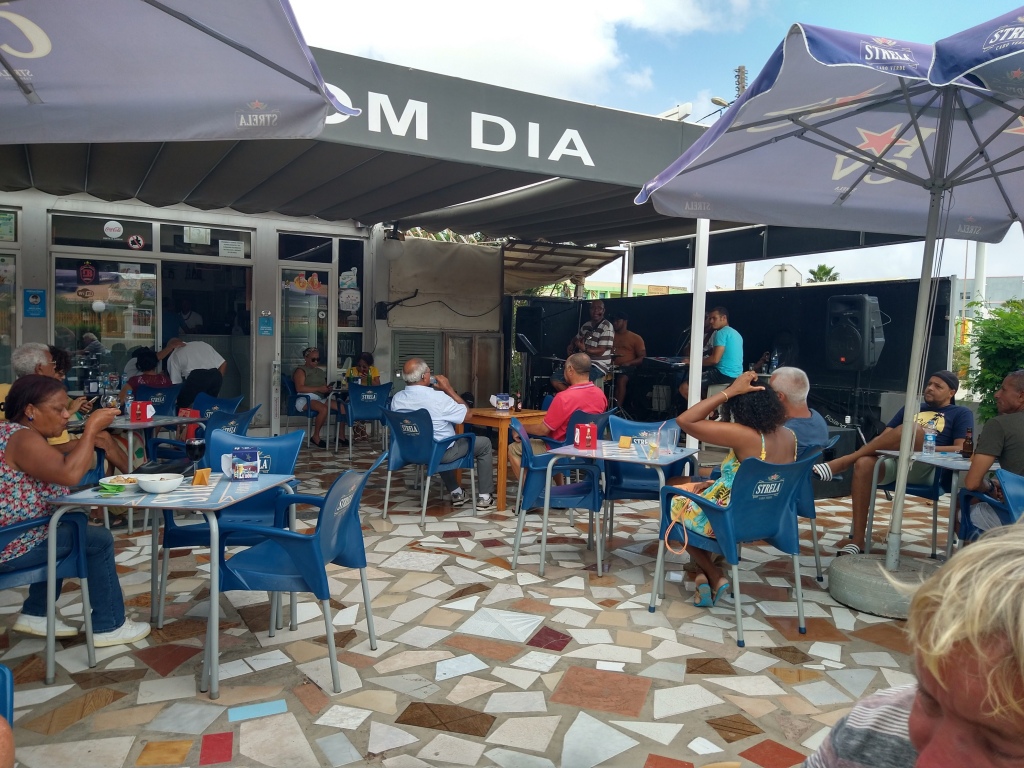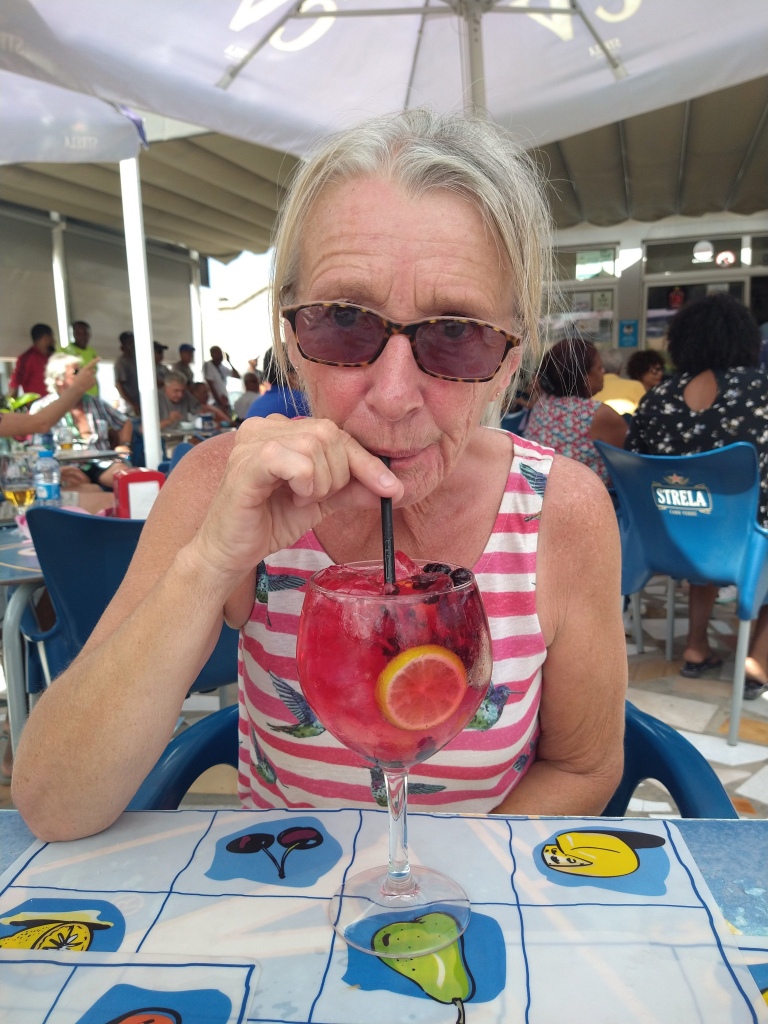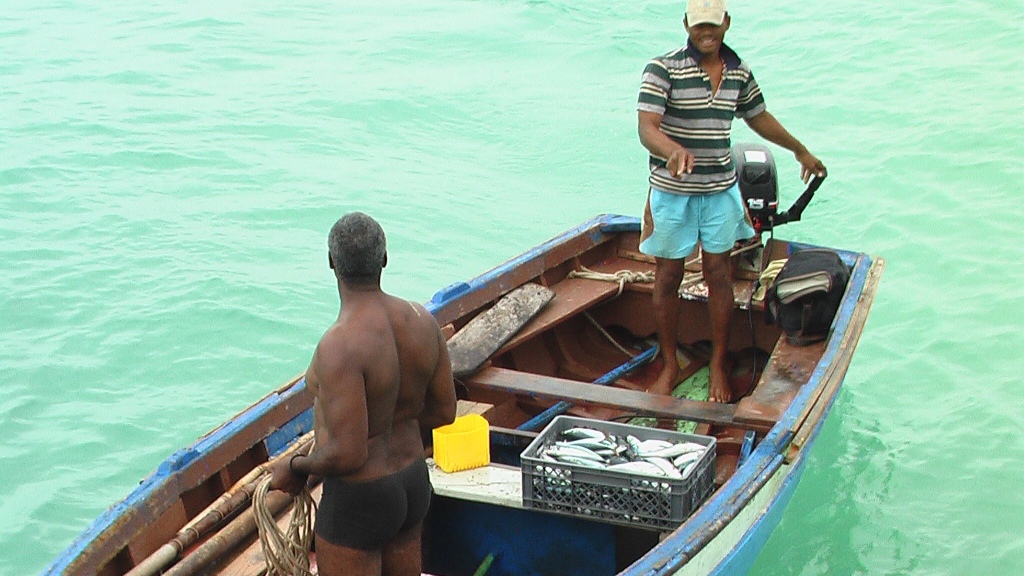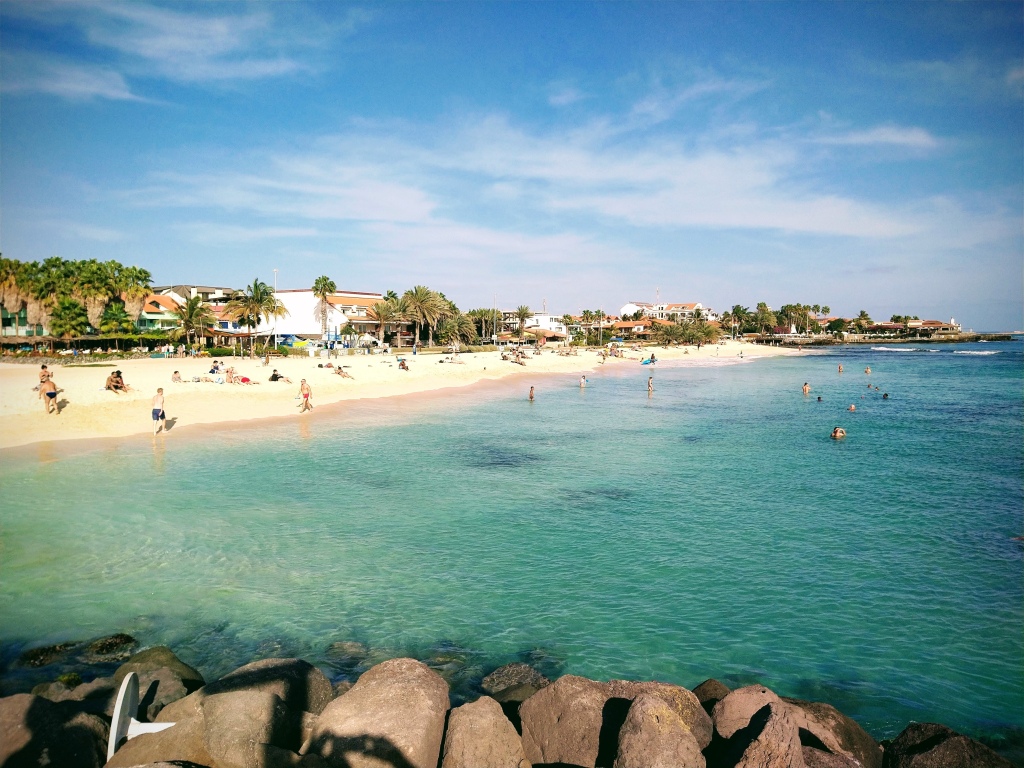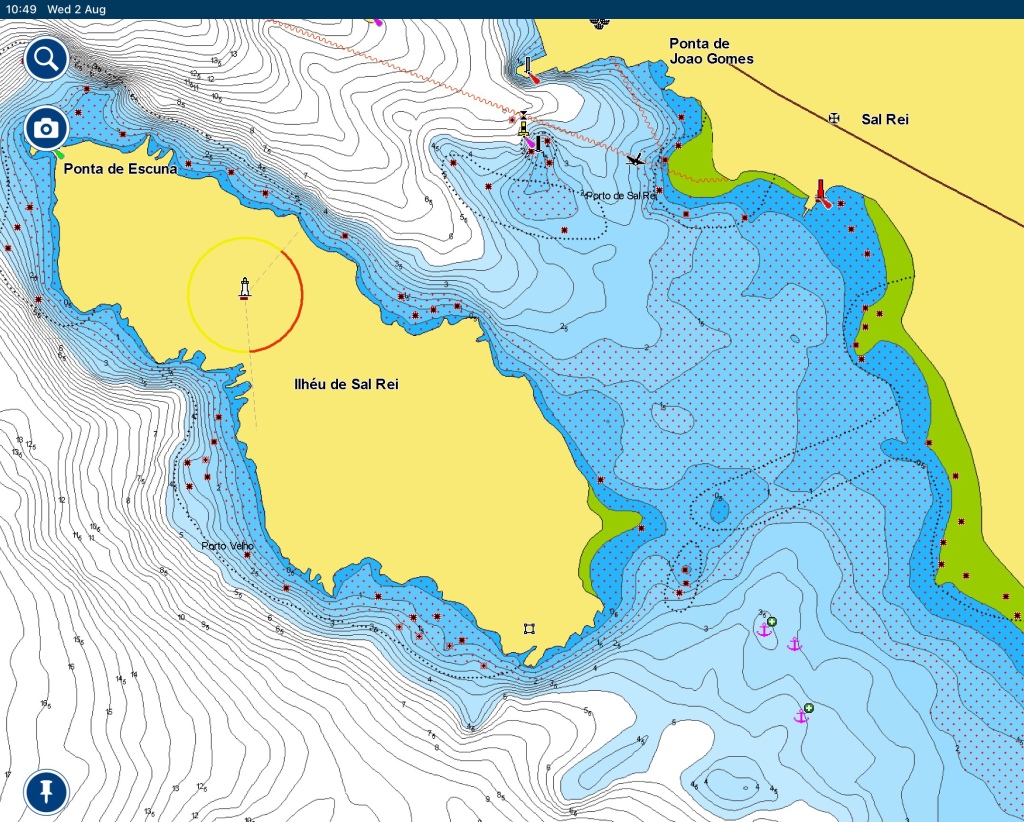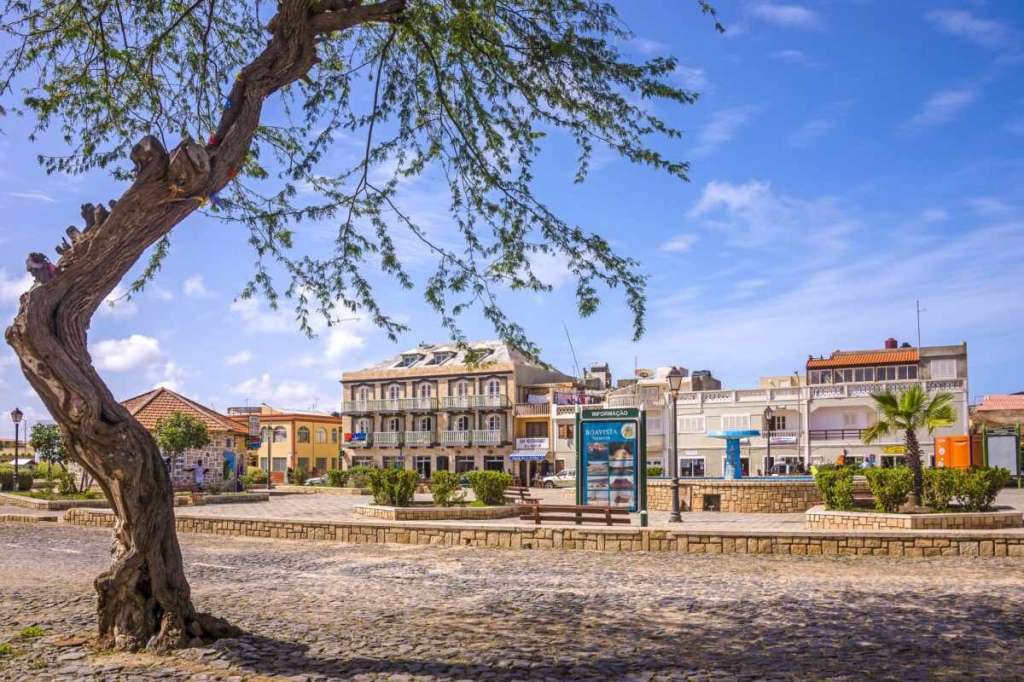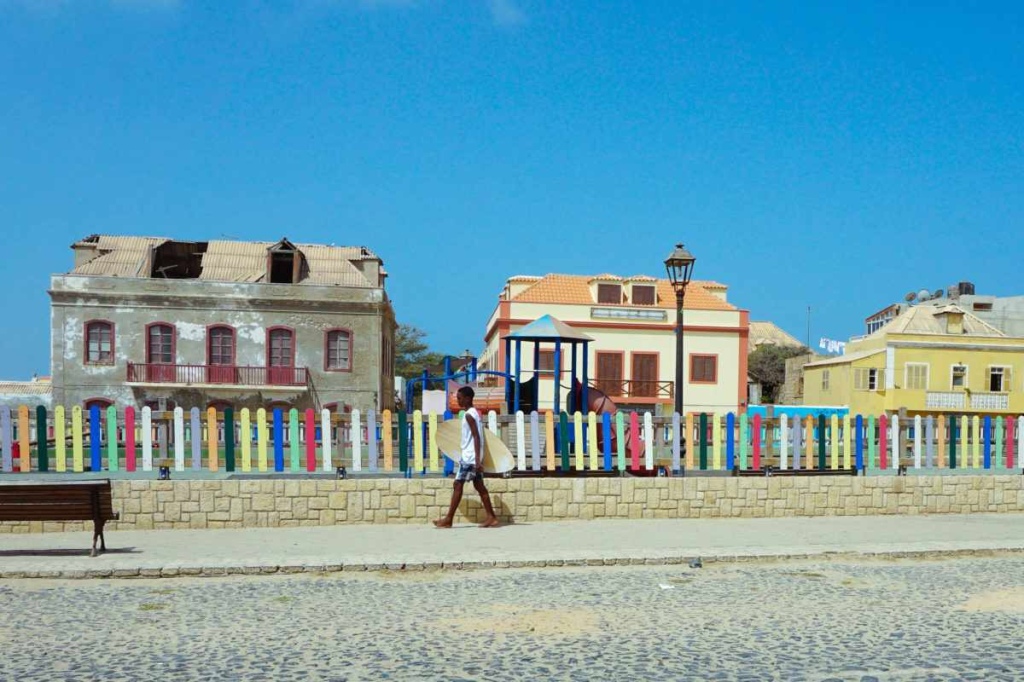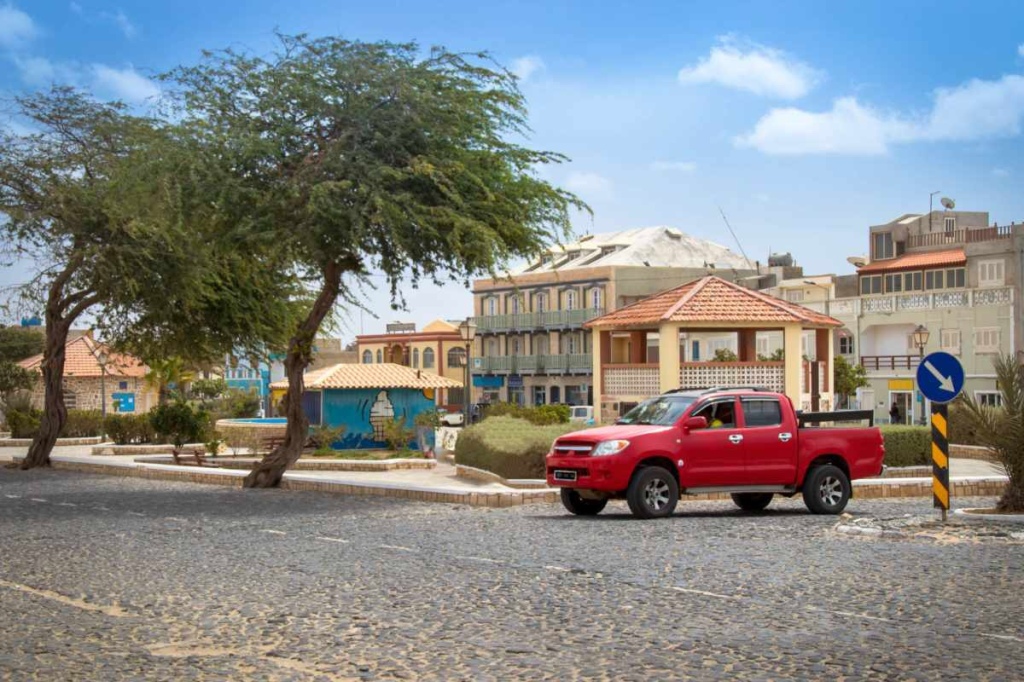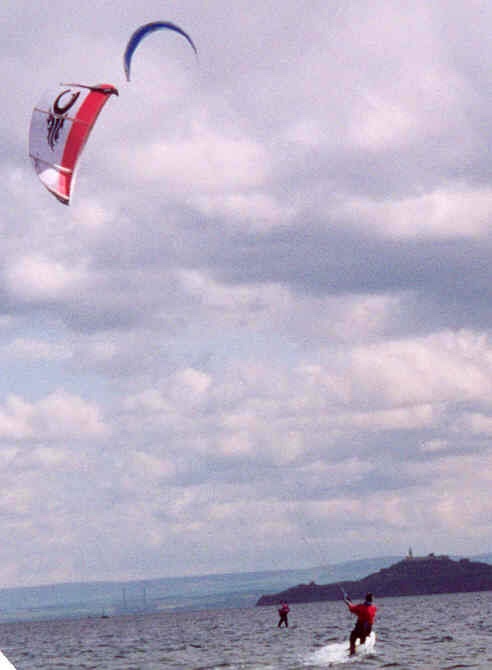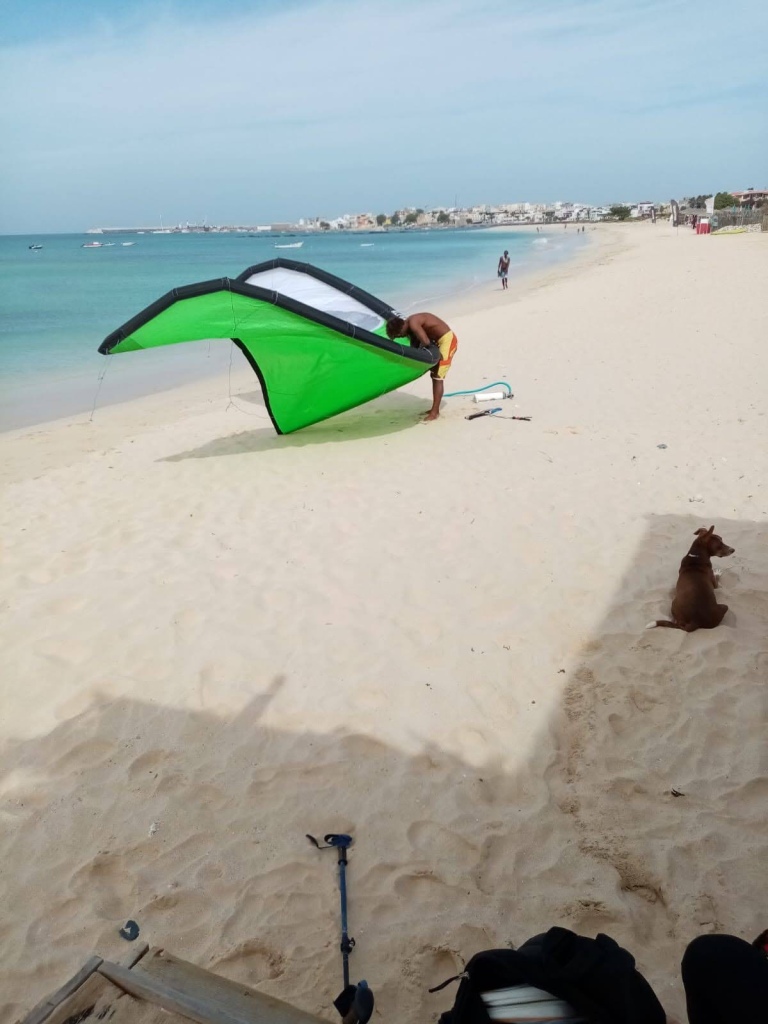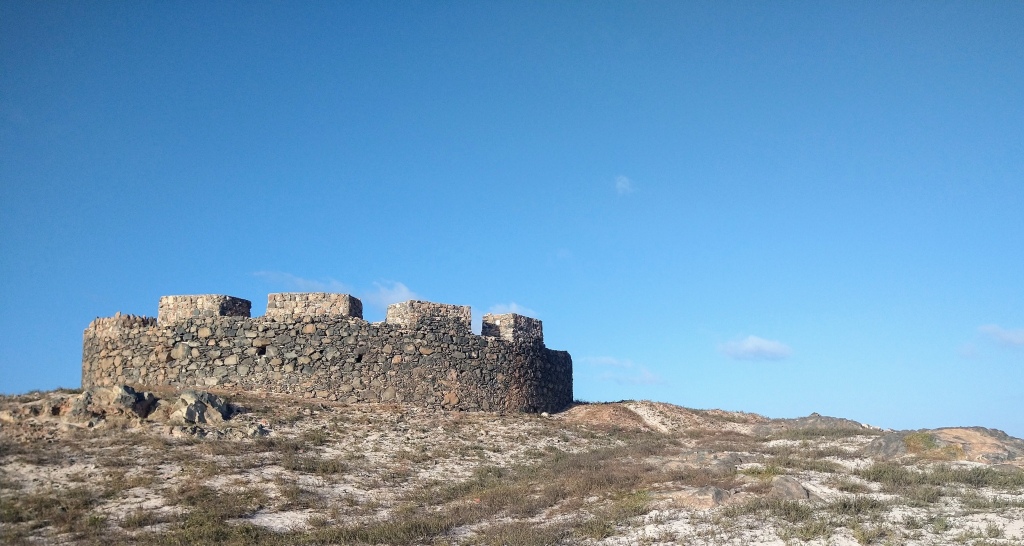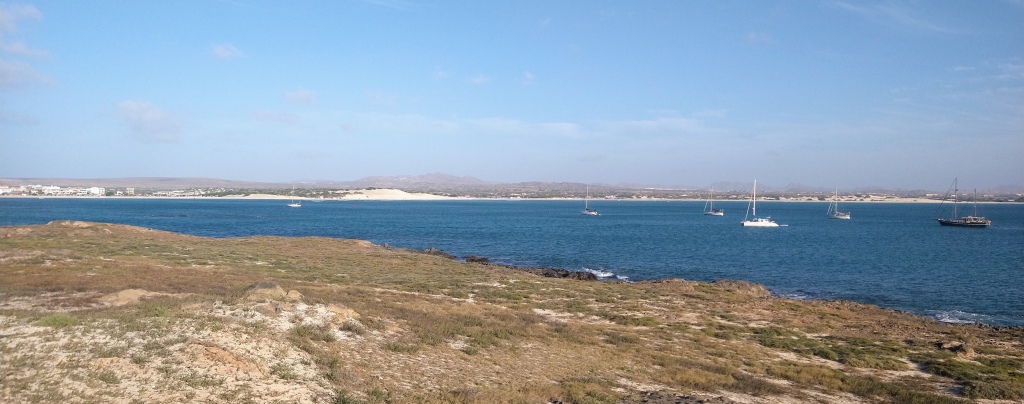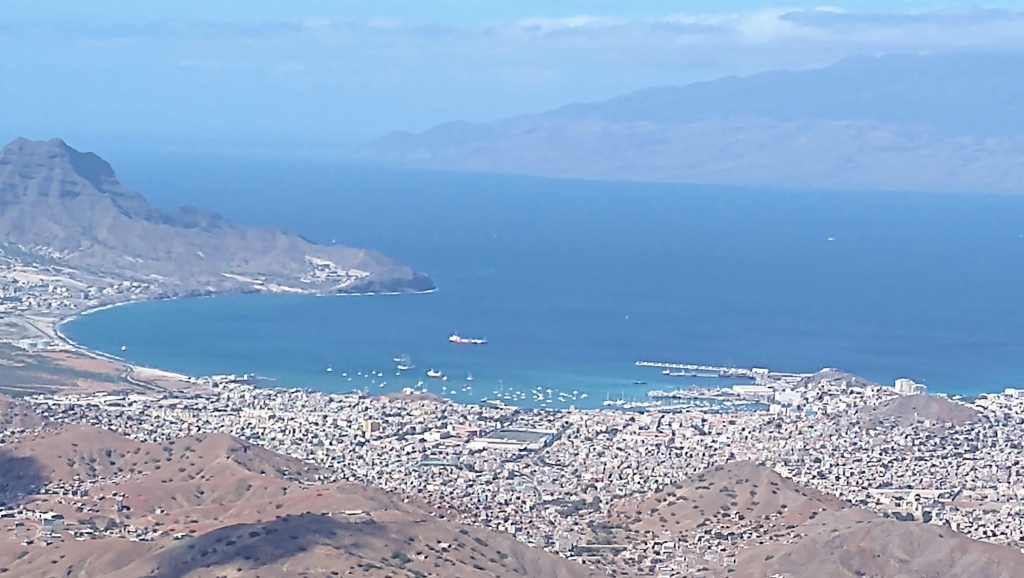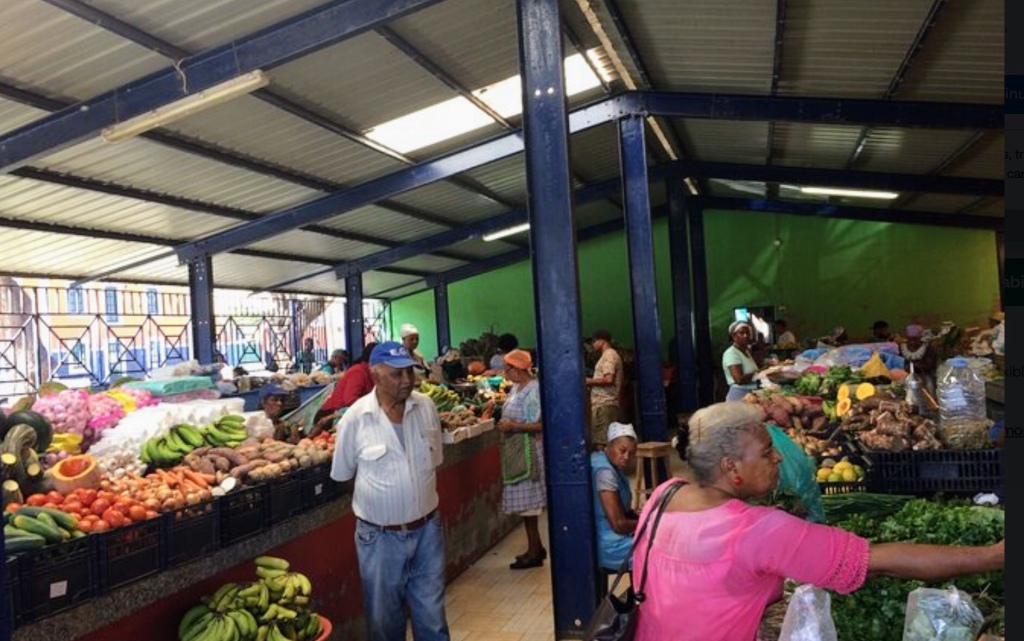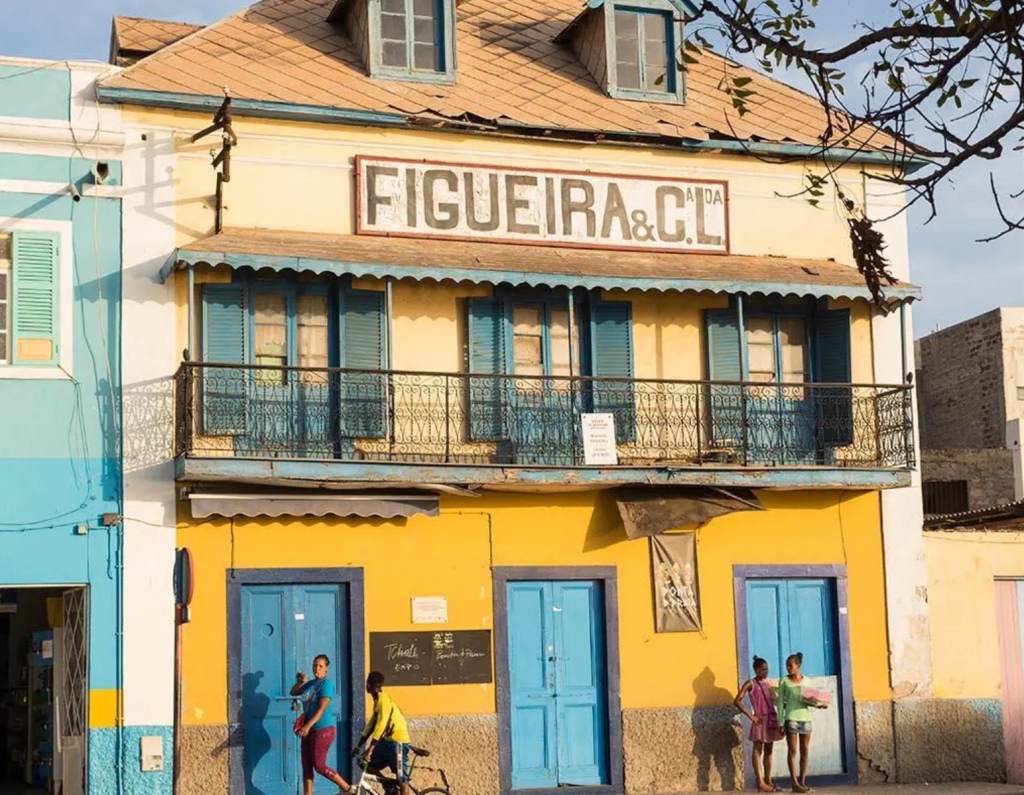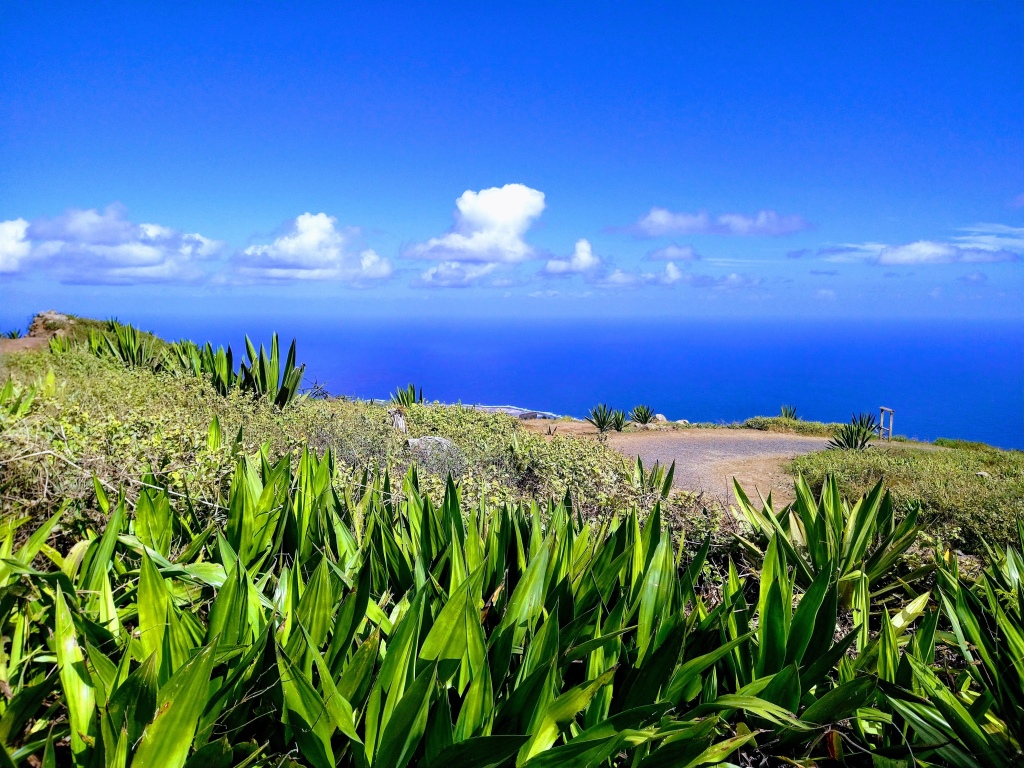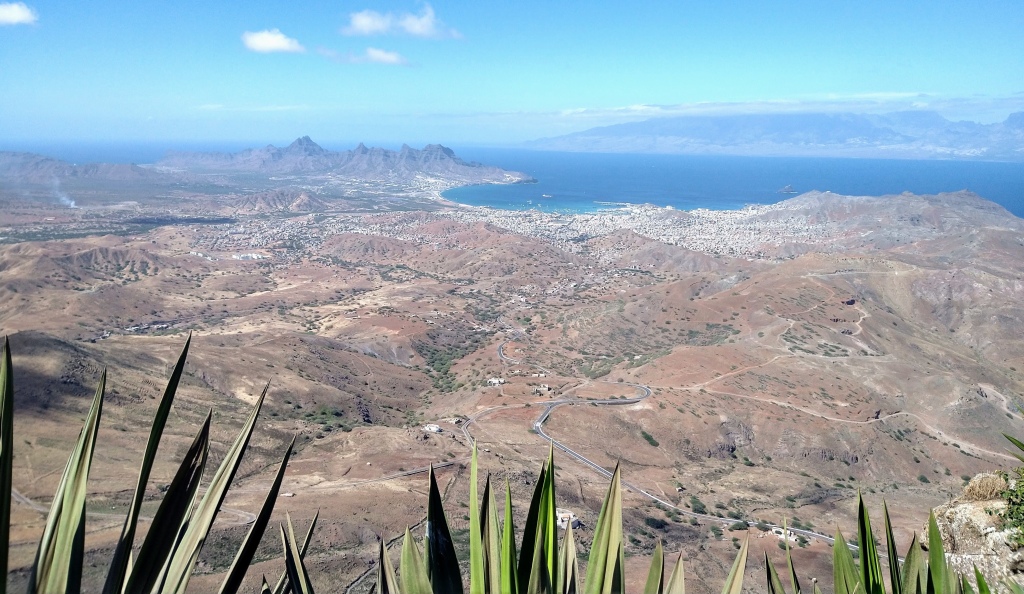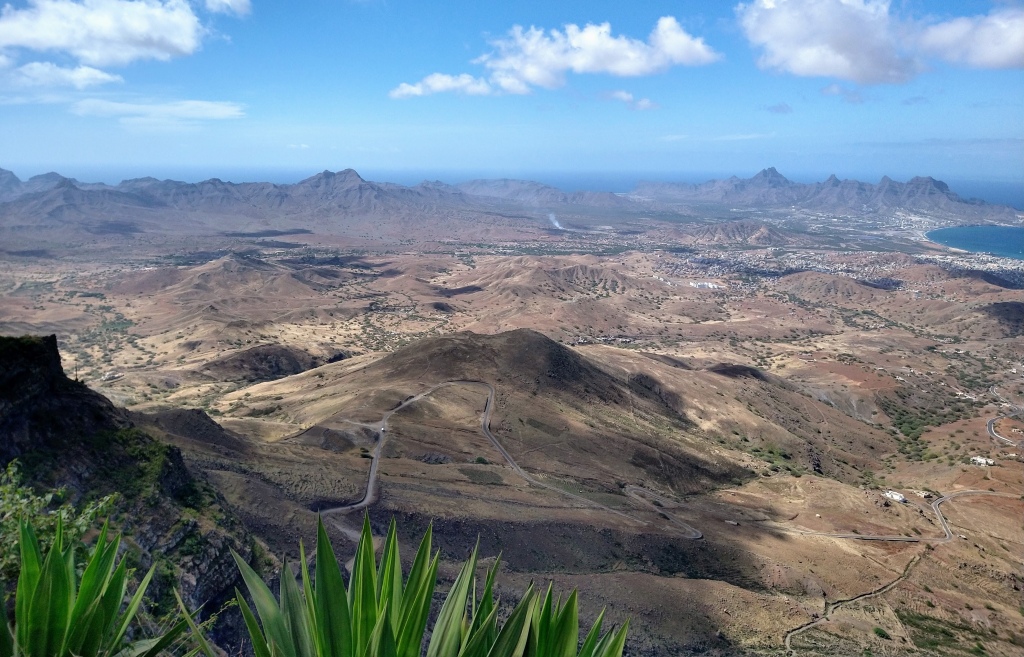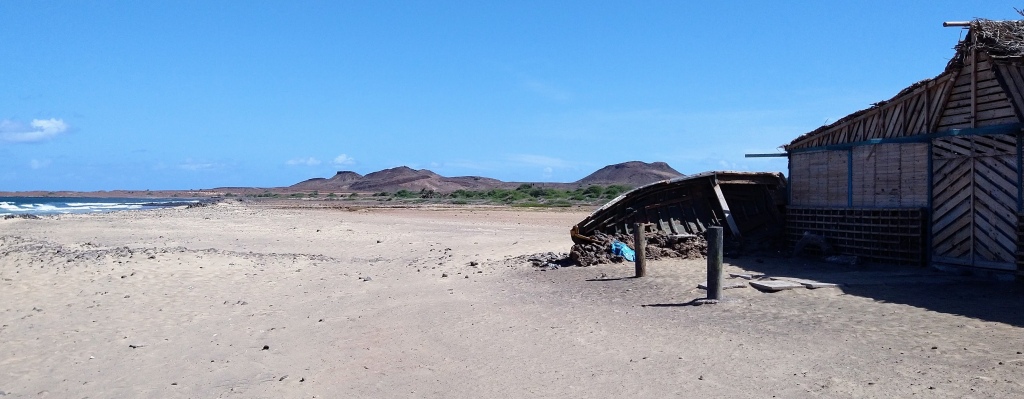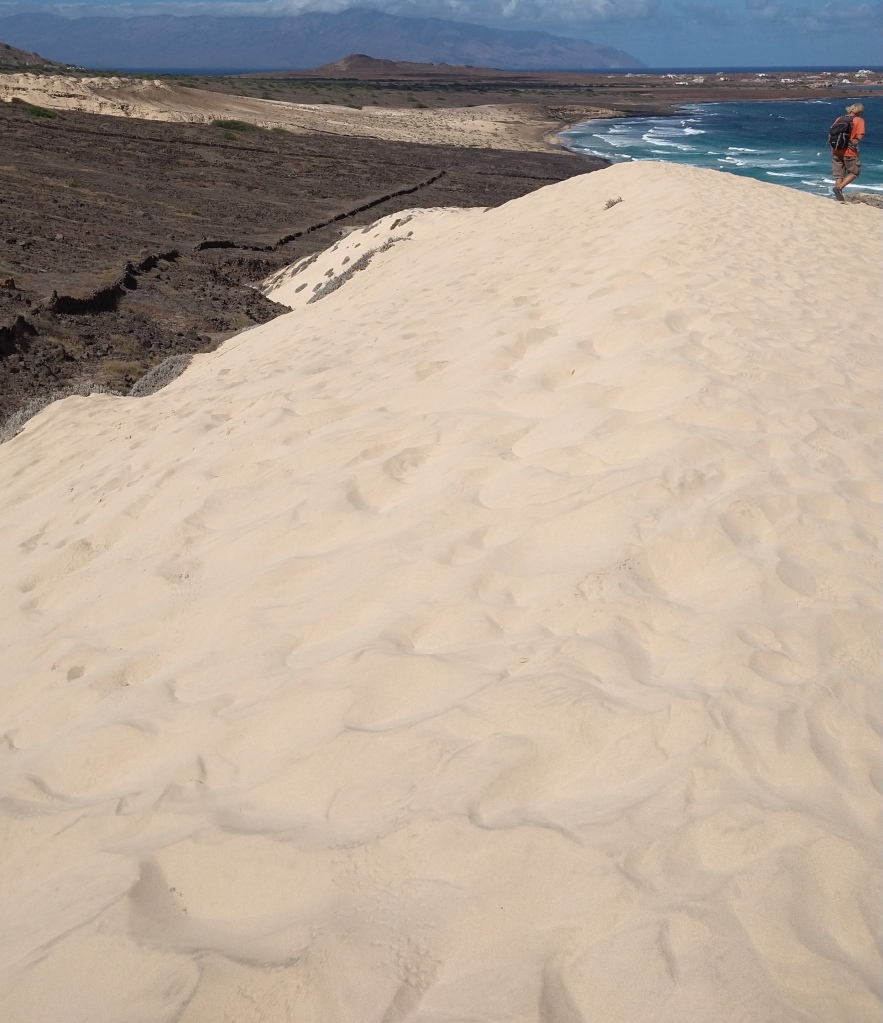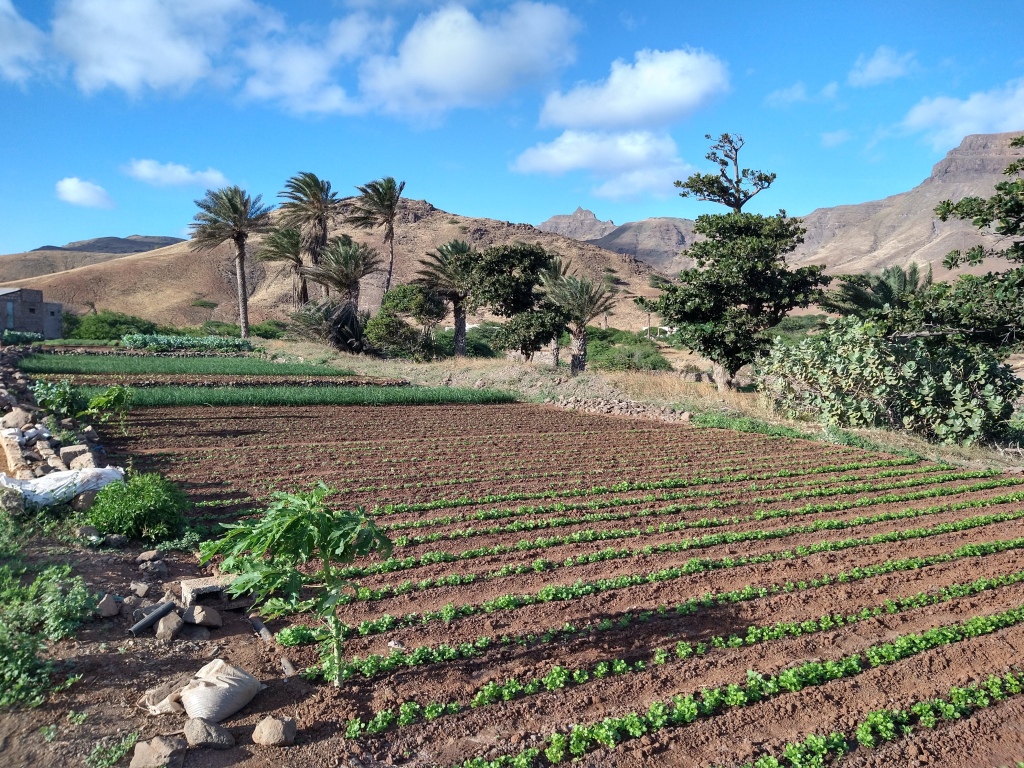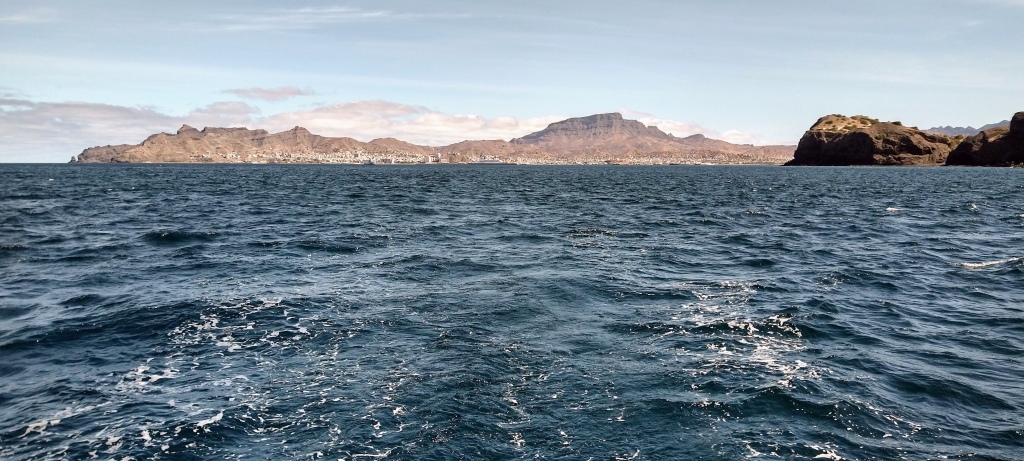Barbados was first discovered and settled by the Troumassoid people from the mainland of South America in around 350 to 650 AD.
There was a second wave of settlers, the Arawaks, in around 800 AD and a third in the mid-13th century, the Amerindian settlement. This settlement came to an end in the early 16th century.
The Portuguese were the first Europeans to discover the island in 1536 on a voyage to Brazil. The Portuguese navigator Pedro A. Campos named it Os Barbados meaning “bearded ones” after the fig trees which had a beard like vines dropping from their branches.
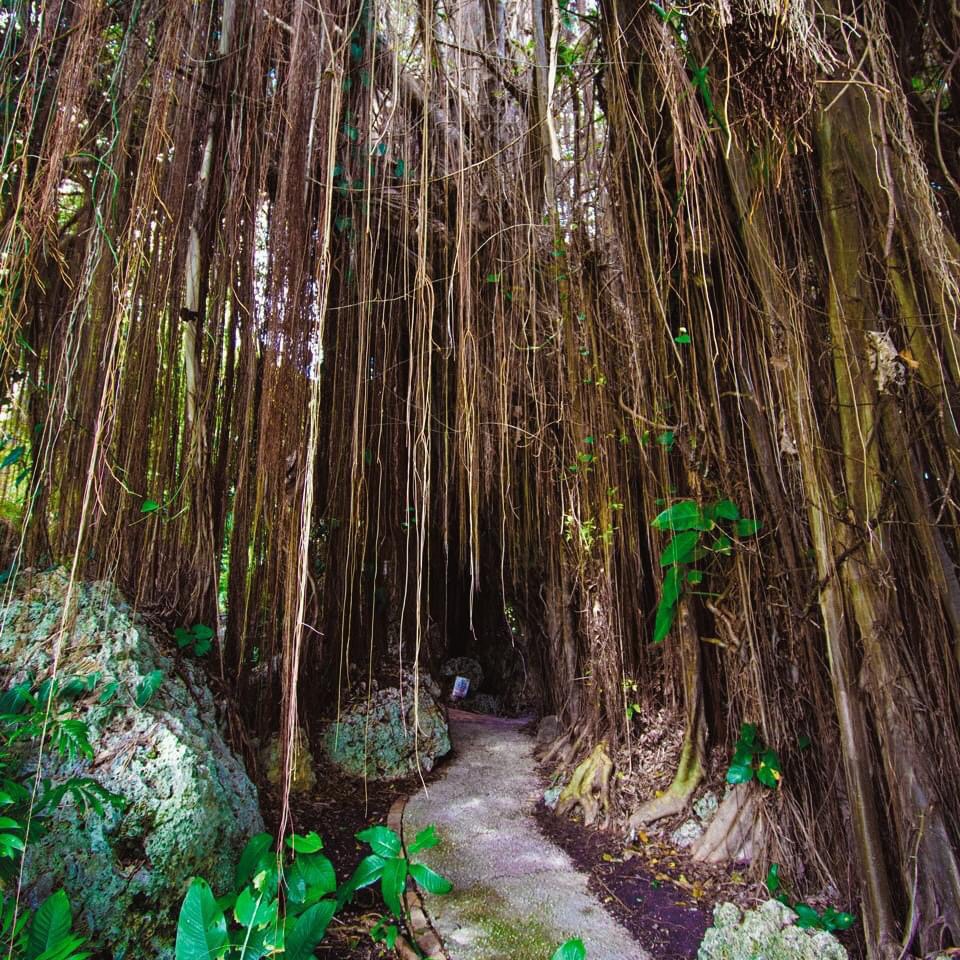
We discovered Barbados at 14:12 on the 23rd of December 2022 after our Atlantic Crossing from the Cape Verde. We made landfall at Port Saint Charles and had a celebratory G&T and a bite to eat before putting the outboard on the dinghy and heading ashore to check in. Customs and immigration have an office next to Pier One restaurant and we were able to use their dinghy dock while we completed formalities.
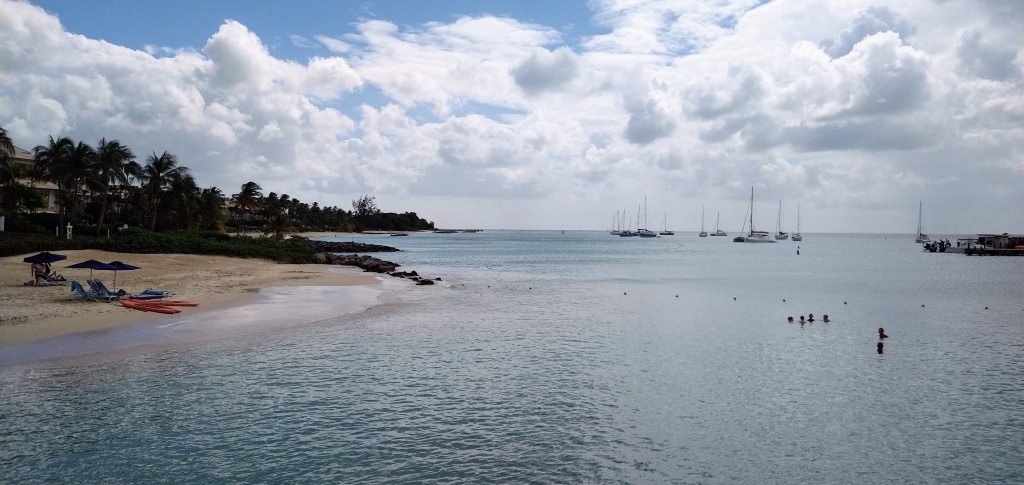
I mentioned our experience on arrival in my blog on our crossing but I’ll repeat some of it here for anyone who hasn’t read that post yet.
I’d tried to dress relatively smartly in a collared shirt and new khaki shorts. We entered the office, only for the customs officer telling me I’d broken Barbadian law as any type of attire that could be construed as military was strictly forbidden. Like a chastened schoolboy I was sent back to the yacht to change.
By the time I returned Gill had completed most of the paperwork and I only had to sign the forms.
Health, customs and immigration are in the same room with 3 desks but only one chair so you had to carry the chair from desk to desk which we found amusing.
After my faux pas the officers were extremely friendly and helpful. They directed us to the ATM so that we could get some Barbadian dollars to have that Caribbean rum that it’s famous for. On the walk into town past the beach and through the palm trees I had a grin from ear to ear – we’d arrived!
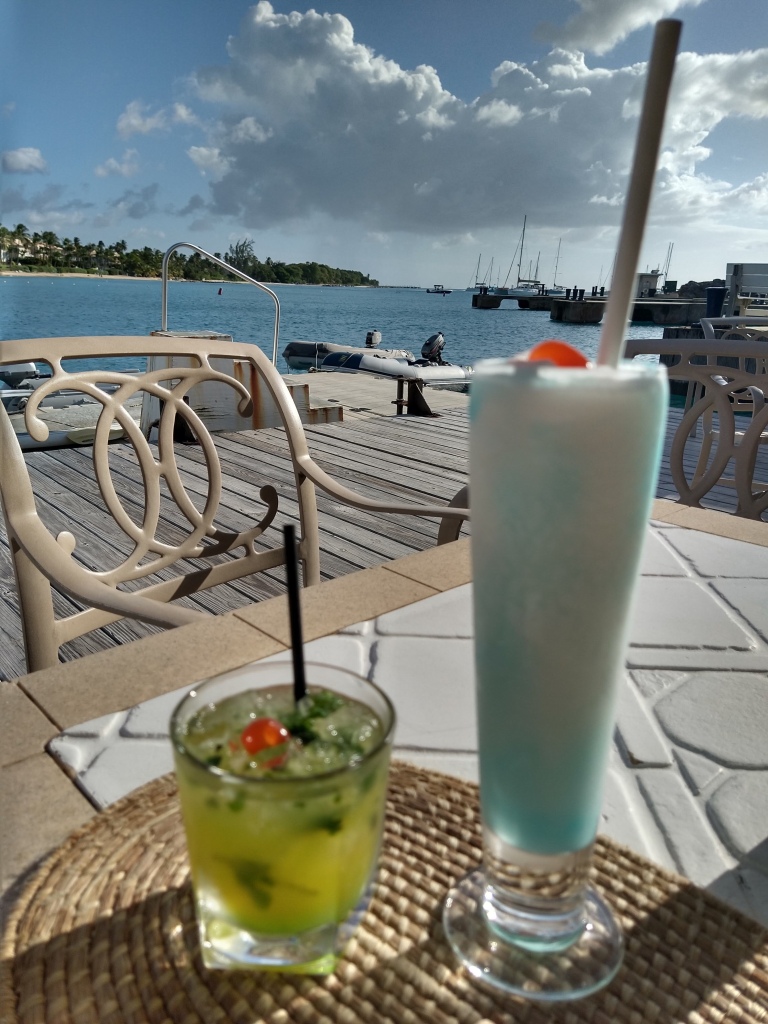
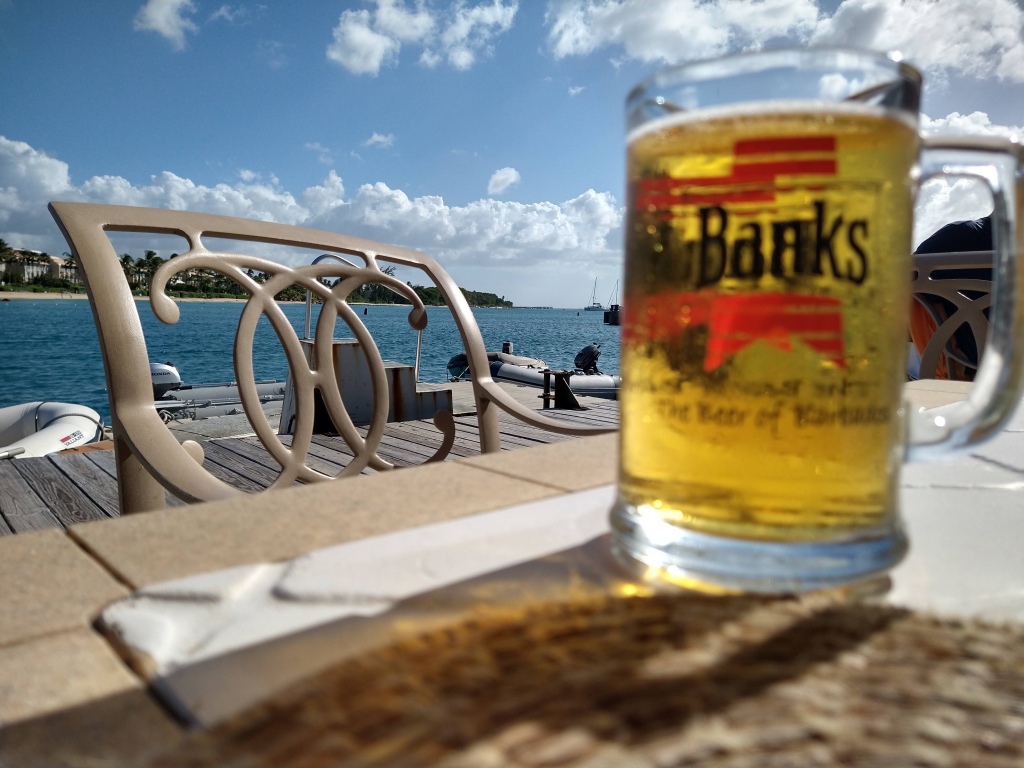
We returned to Coriander after cocktails and the locally brewed Banks beer which were delicious. We spent the rest of the afternoon putting the sails away and changing Coriander back to a cruising boat from a voyaging boat.
We had an early night in our cabin for the first time in almost 16 days and slept well without any rolling or boat and wave noises.
We’d chosen Barbados for our landfall because it is the closest to the Cape Verde islands and it is 50 miles to windward of the main island chain and to go out to it would involve a 50 mile beat to windward which could be pretty unpleasant and which we probably wouldn’t do.
Early on Christmas Eve we moved down to Carlisle Bay at Bridgetown, the capital of Barbados. We anchored off the beach near the entrance to the Careenage.
The Careenage is the natural harbor that runs from the Caribbean Sea the short distance to the center of Bridgetown.
It has been transformed from a place where schooners were once turned on their sides for scraping (i.e. careened) to a small marina.



According to our charts there is a convenient place to tie up dinghies just beyond the first bridge.

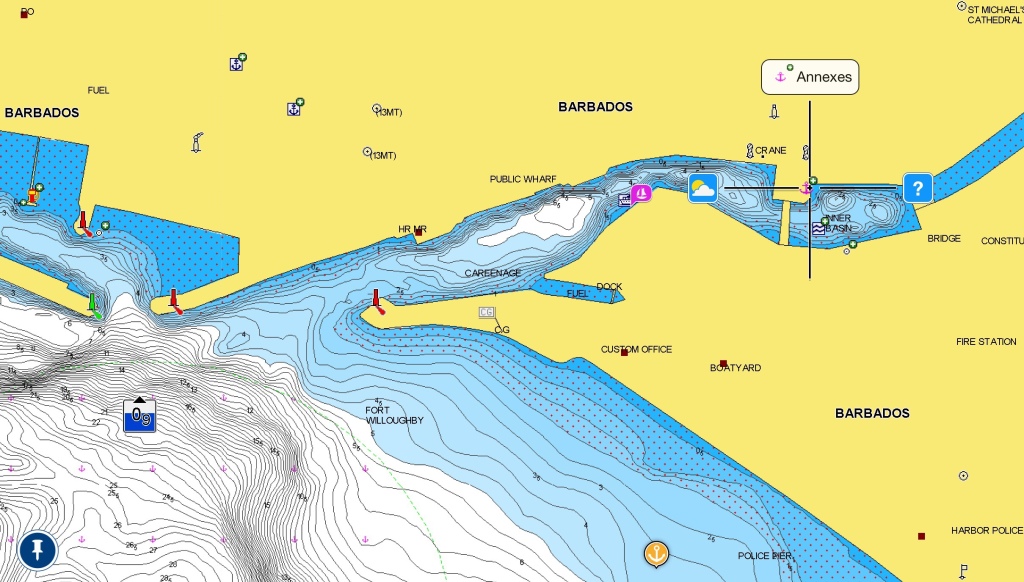
We decided to head into town and padlocked our dinghy to the steps where our chart suggested and headed in to town.
It being Christmas Eve the town was heaving. It was strange in a way to be walking around in shorts and t-shirt in hot sunny weather with Christmas music blasting out and crowds of people wearing Santa hats.
The atmosphere was amazing. Everyone was having a good time doing last minute Christmas shopping and we did the same, buying presents and food and drink for the Christmas Day meal. Unfortunately I didn’t get any pictures that day but this is a typical street scene in Bridgetown.

We had another early night and when we got up on Christmas Day, Owl and Pussycat were coming into the anchorage to anchor next to us. They’d slowed down overnight so that they would arrive in daylight.
We dinghy’d across to Owl and Pussycat to help Mike and Claire put their sails away and launch their dinghy and fit the outboard. We sat down for a celebratory drink but after a couple of drinks Mike felt faint. Claire put Mike to bed and we returned to Coriander having finished our drinks with Claire. We’d half prepared Christmas Dinner but it was no problem to postpone it until the 26th by which time Mike had made a full recovery – see below 👇

After lunch we all dinghy’d into town to see what was going on. We found out that in the Caribbean, nothing was open over Christmas. The bustling town that Gill and I had witnessed on Christmas Eve had become a ghost town.
While Gill and I had been exploring on Christmas Eve we’d come across a dominoes tournament, sponsored by the local brewery, Banks. We’d had drinks and ham cutters for lunch while watching some very passionate domino playing which seemed to involve slamming the dominoes down with as much force as possible.

We recalled that the tournament was over several days and with hopes high we set off for Freedom Park where the tournament was being held. The sound of voices and music confirmed that we’d be able to get drinks and relax watching the action.
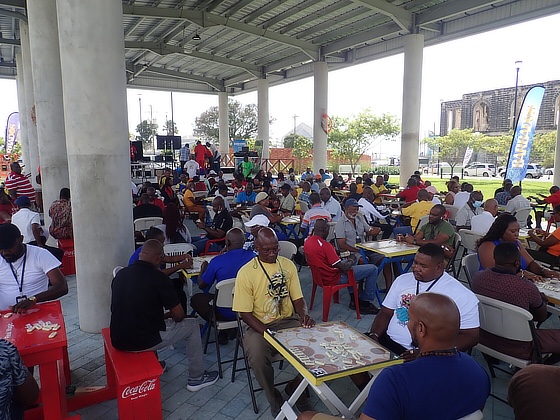

Freedom Park was opened in November 2021 on the eve of Barbados becoming a replublic.
The site was chosen because it was the location where the national hero, Clement Payne, held public meetings encouraging the poor and disadvantaged to demand better working and living conditions.
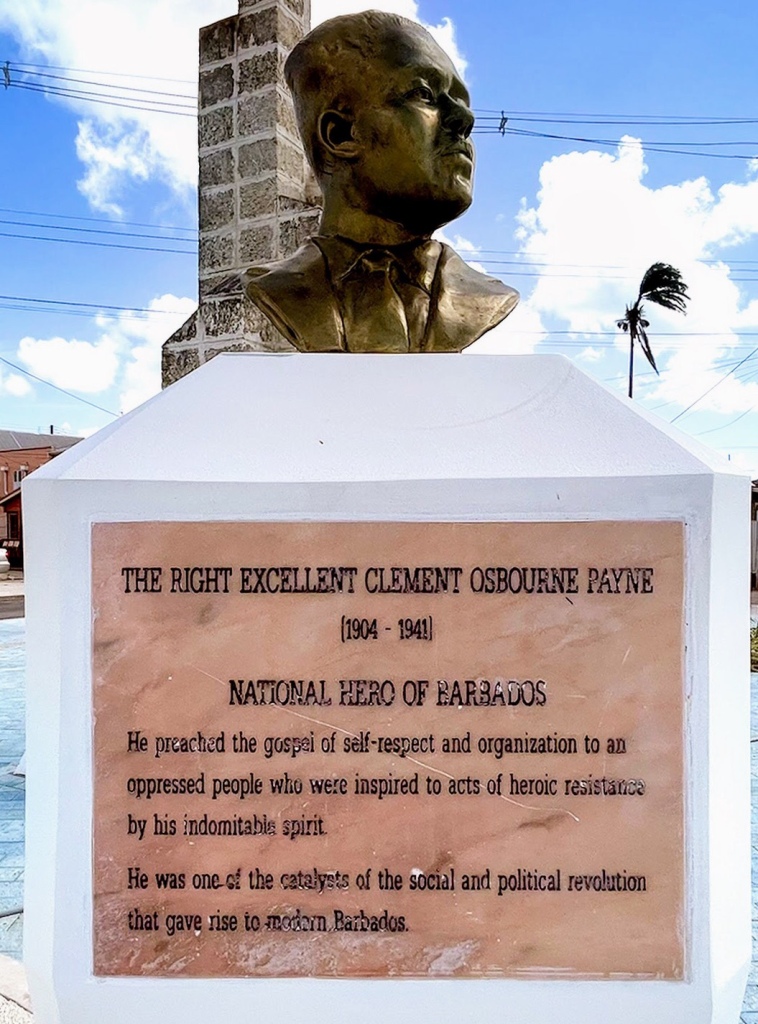
The colonial government saw him as a security threat and deported him from the island in July 1937. This was the final straw and four days of rioting followed, in which 14 people died and 47 were wounded.
The riots led the colonial authorities to act, thoroughly investigating the conditions in Barbados and other British Caribbean colonies. Many of Payne’s suggested reforms were subsequently implemented. July 26th – the day of the riots – is observed in Barbados as a day of National Significance.
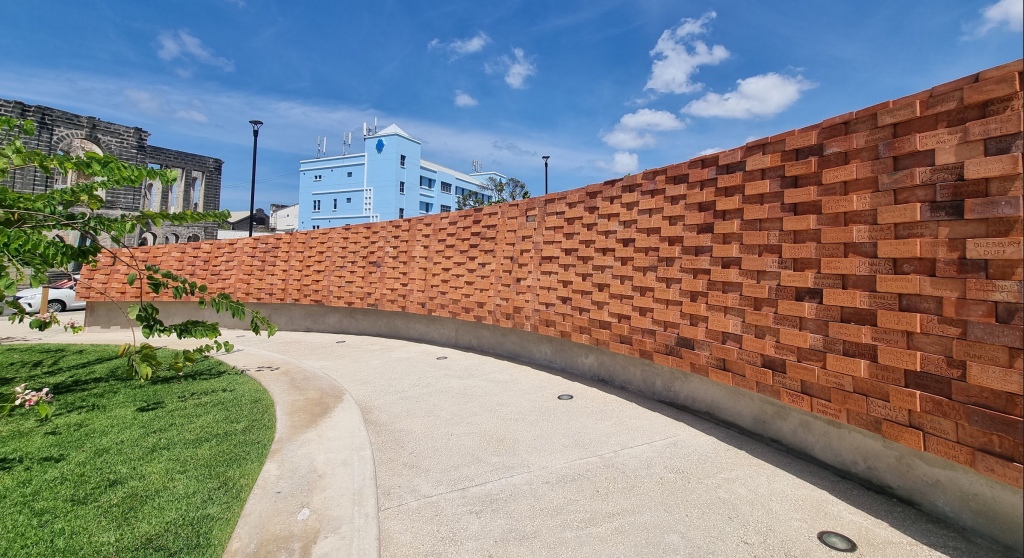


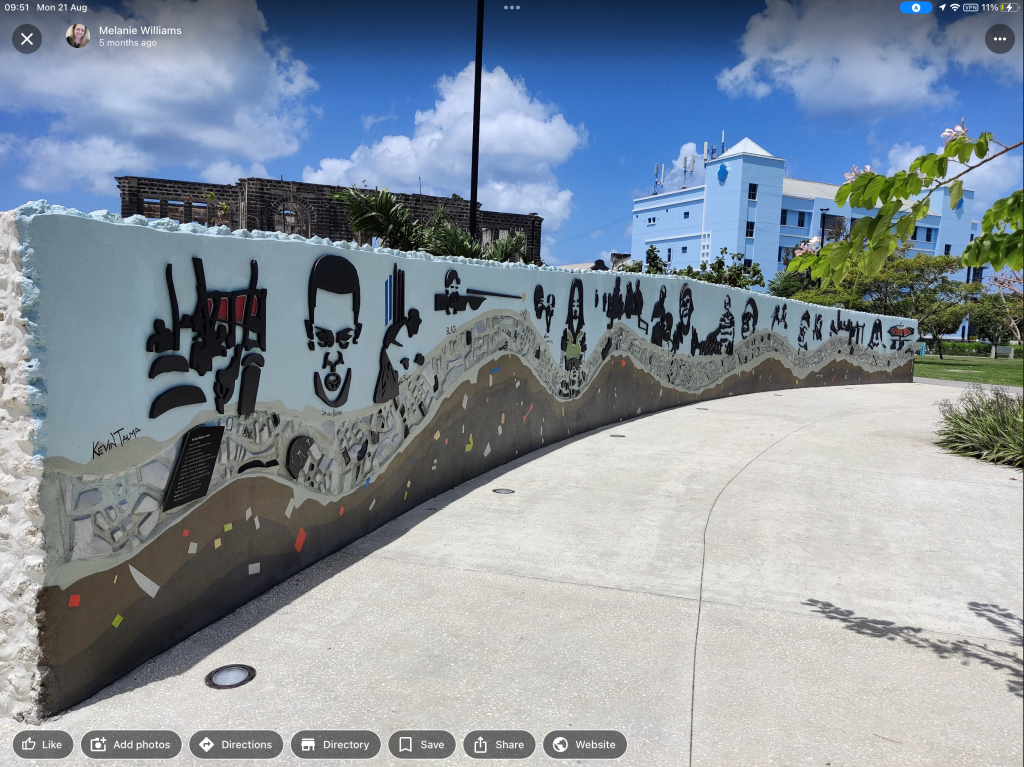
Barbados has a history of slavery like many of the islands of the Caribbean and plaques detailing some of what happened are all around the town.


It’s was pretty harrowing walking around town reflecting upon the history of the islands and what had transpired to create the cultural diversity we see now.
With Christmas Day being on a Sunday, the holiday extended and extra day so Tuesday saw us at the dominoes yet again. This time for the finals. I never thought I’d be grateful for a domino’s tournament, and especially not at Christmas.
It had been a pretty emotional few days, we’d achieved a major ambition of crossing the Atlantic, had a hectic few days in a new country and of course missed family back in the UK having a completely different Christmas to us and having to catch up and wish happy Christmas over the phone.
It was quite surreal being in summer holiday mode with Christmas images suggesting cold and snow all around.
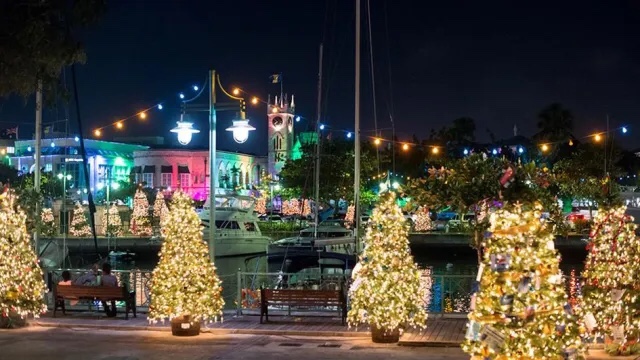
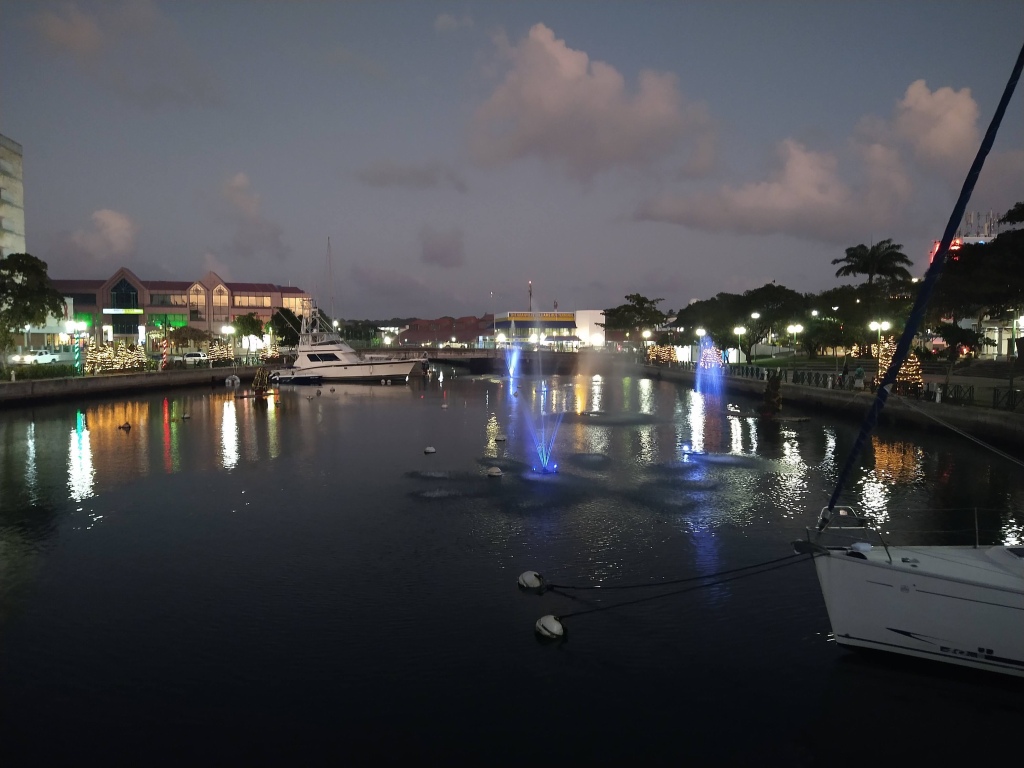

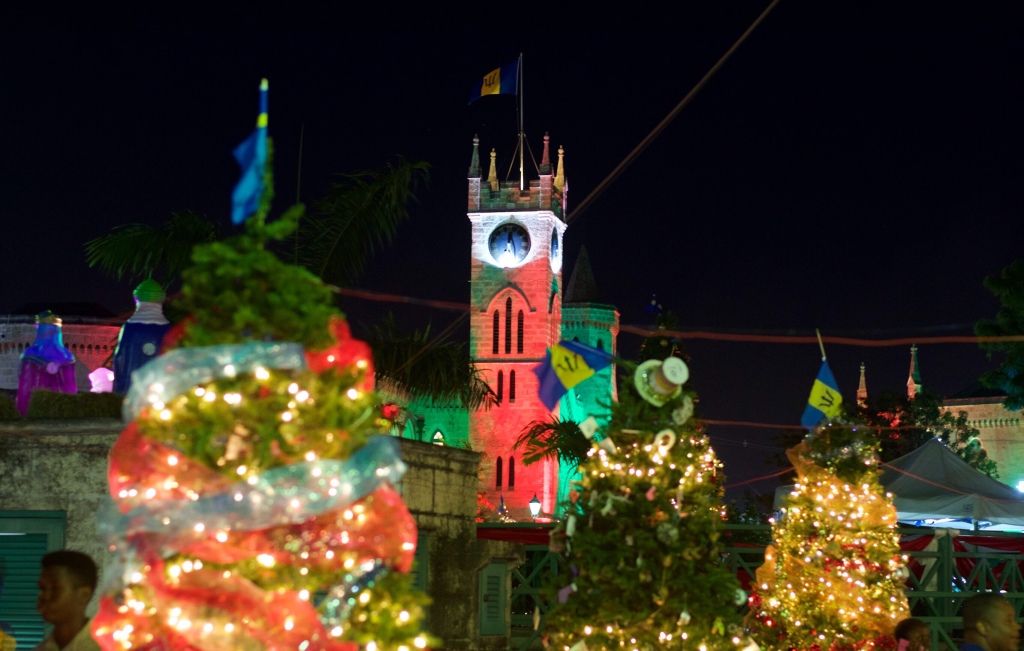
By Wednesday everything opened so we again ventured into town. When Mike and Claire had last visited Barbados they had discovered a rum shack in the town centre. Gill and I had passed it on Christmas Eve and it had been rammed. To be honest it was pretty busy every time we went there. It consists of a shed with a couple of fridges in it and some pretty rough benches and music blaring out of a couple of speakers.
You don’t order individual drinks, unless it’s beer, but instead buy a bottle of rum and a bottle of cola and a dish of ice. The rum comes in half and full bottles. We fully approve of this system and it was very cheap.
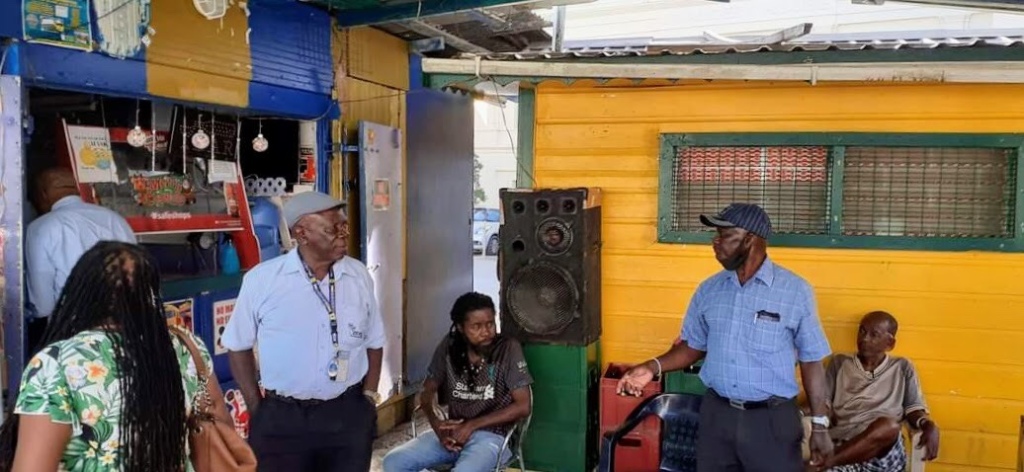
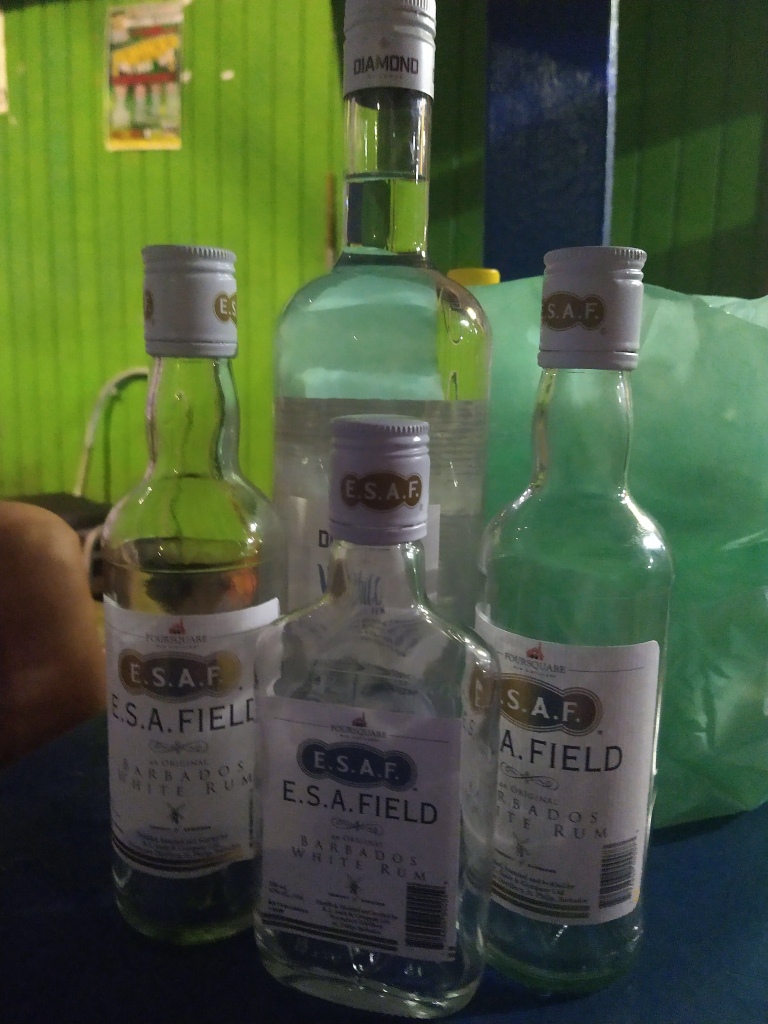
The locals got to know us, and us them, striking up interesting conversations about life on the island. It was great to be part of the non tourist scene and see life as it really is. We drank and danced with them on several occasions. We’d arrive and they’d make room for us, buying drinks and we’d buy drinks in return.
We’d been told about a Caribbean delicacy called a roti. It’s effectively a curry wrap / pancake which I had to try. We seemed to descend on the perfect place…

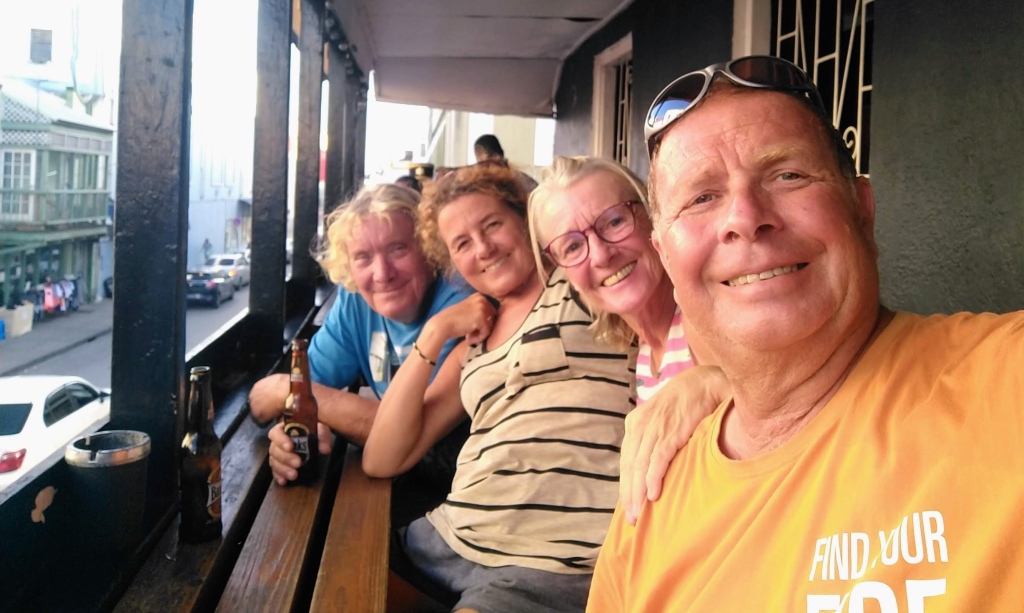
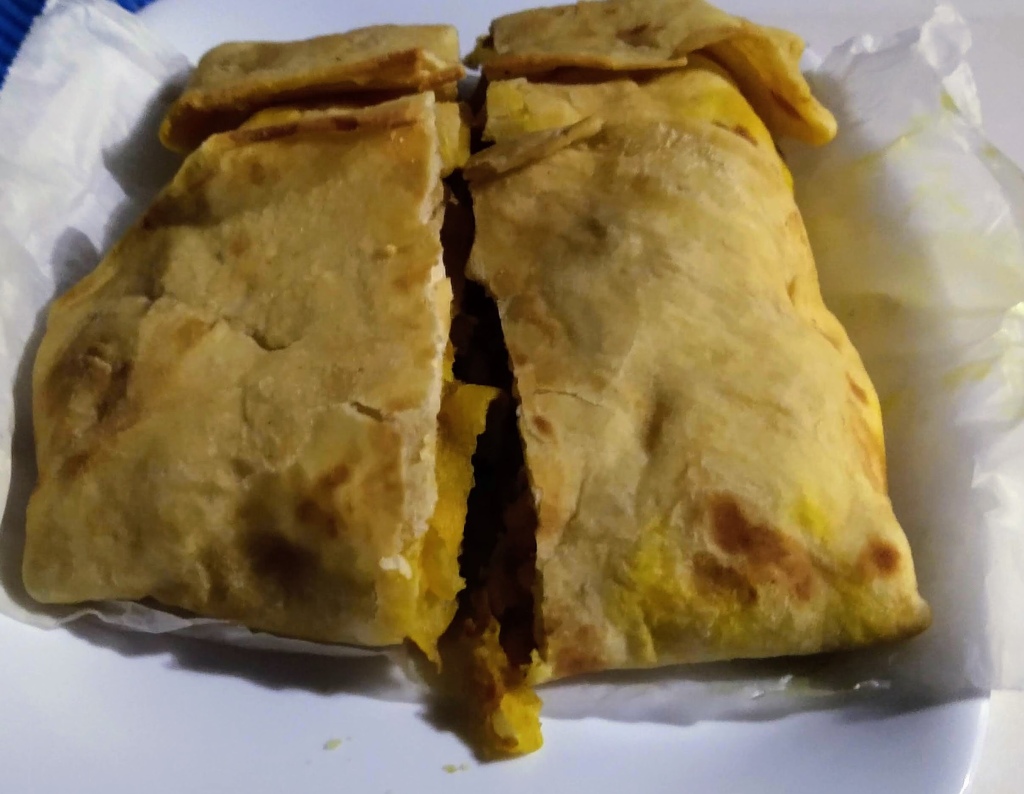
The rotis are potato and curried protein with a choice of chicken, beef, lamb, goat, shrimp or fish with other islands offering conch or other fillings. It’s extra if you don’t want potato or you prefer your meat without bones! They are delicious and huge with one roti doing 2 meals. They often ask if you want pepper – warning, they mean very hot pepper sauce 🌶️🌶️
The second of January is race day at The Garrison race course in Bridgetown. It’s a well attended event with the local community. We paid the general entrance fee which let us in to all areas except the paddock and grandstand.
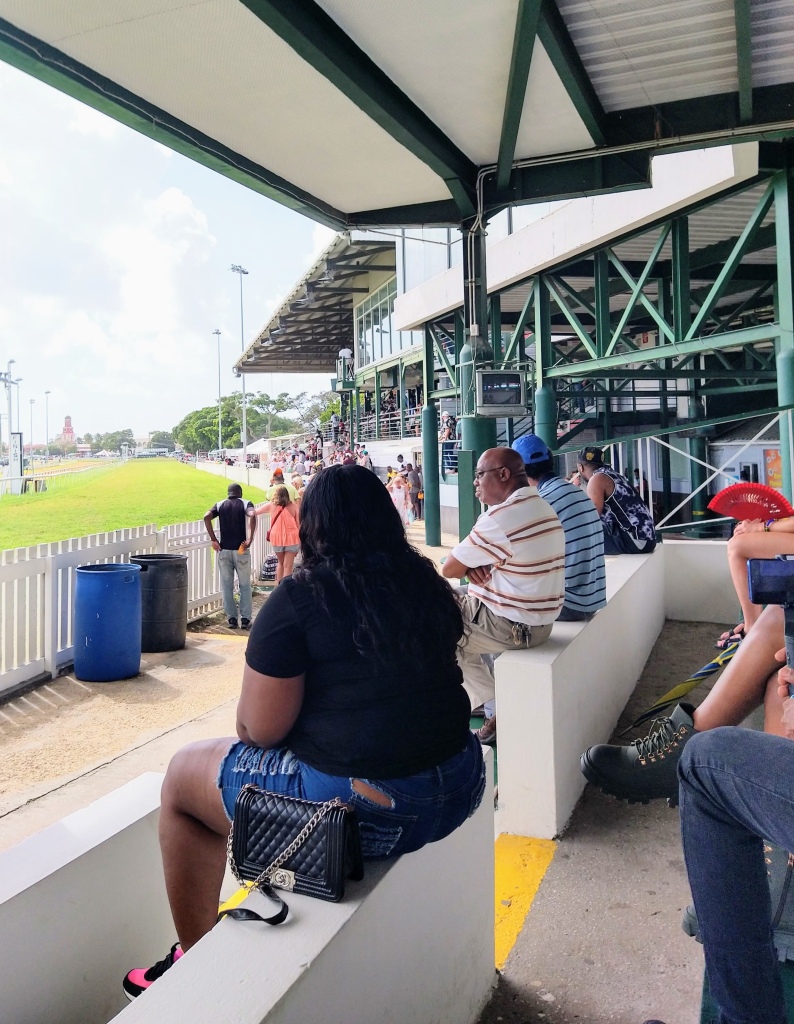
The racing is taken pretty seriously with lots of betting in the different horses. We had friendly bets on each race for drinks and although I started strongly I faded badly towards the end.
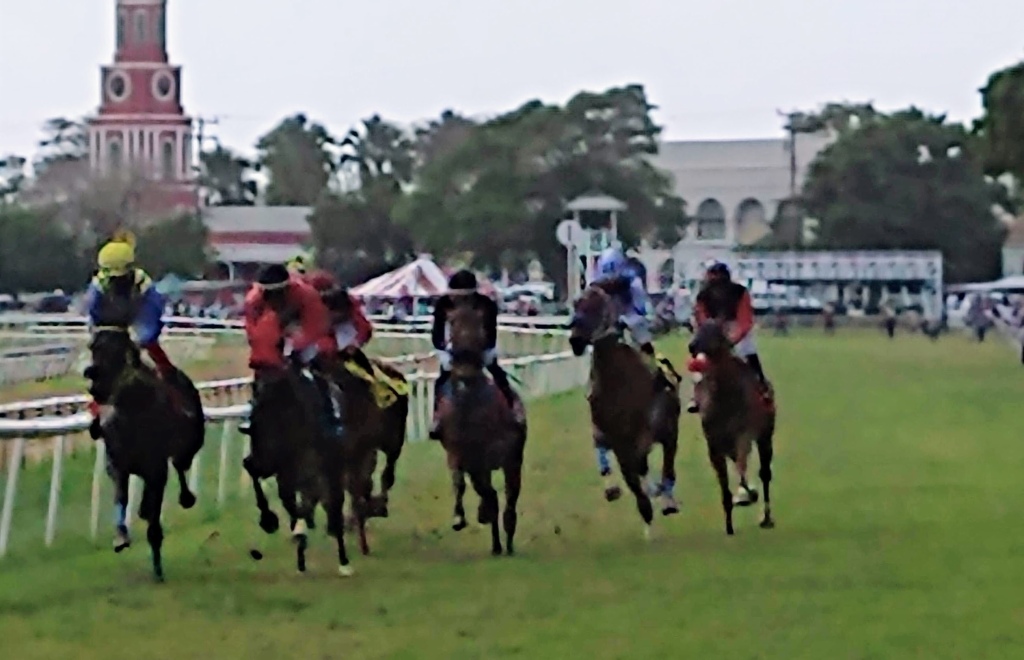


We decided to take a trip into the centre of the island, to Welchman Hall Gully. It’s named after its first owner, a former soldier from Wales called General William Asygell Williams, Welchman being a corruption of Welshman.
We took a local bus up into the hills through magnificent countryside, passing magnificent mansions and run down shacks showing the huge contrast in wealth on the island.
The gully is in the remnants of a collapsed coral limestone cave. The deep sides and narrowness makes it impractical to grow crops here and it is the last remaining place to see many of the original plants of the island.
From the entrance it’s around a mile along a path and then back again on the same route. The technique is to look left on the way down and back with the exhibits being labelled in that order.
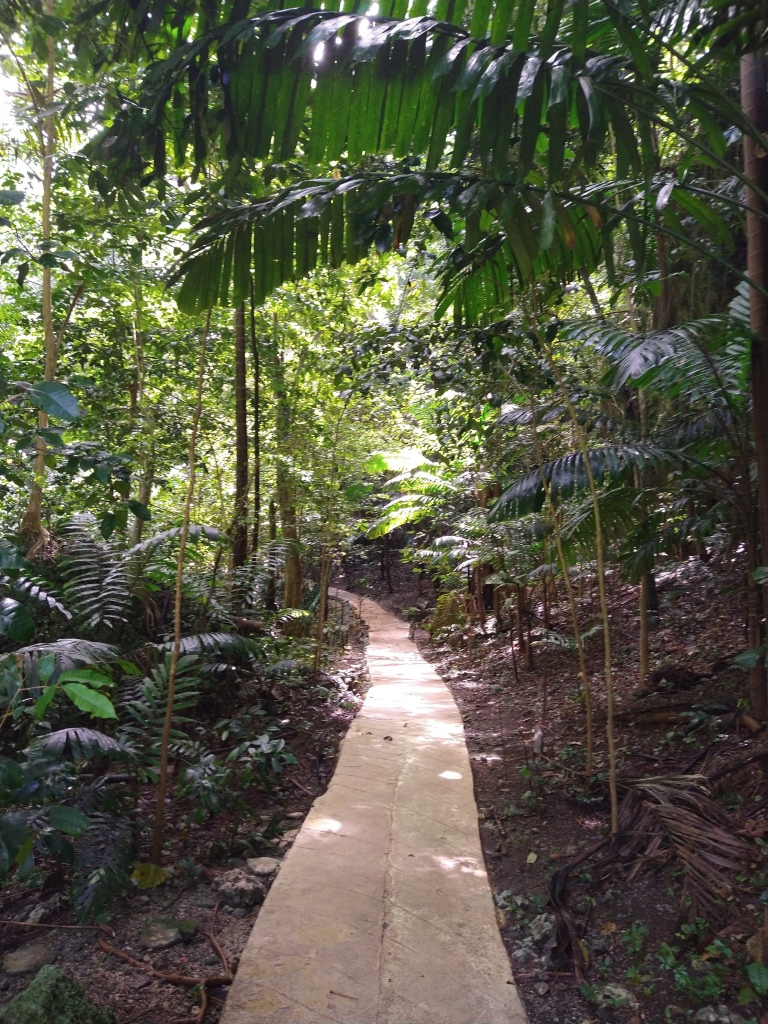
The path through the forest

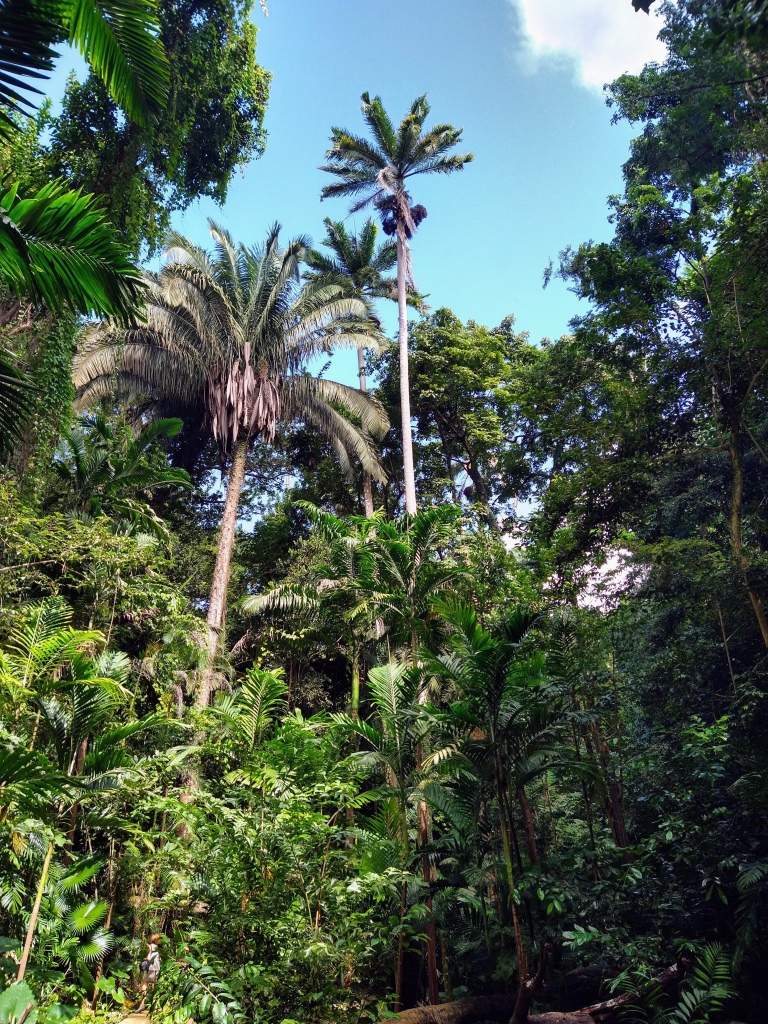
The walk ended with a climb to a lookout point with fantastic views of the island.

And a handy sign reminding us of our previous home.
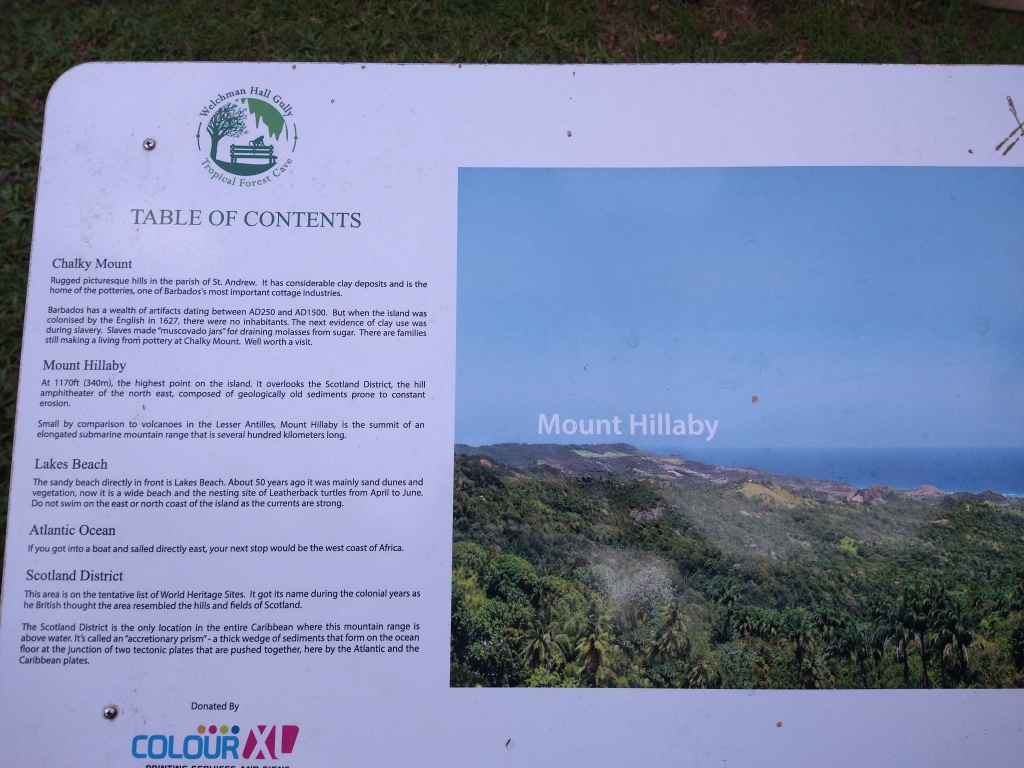


We left the gully and walked down the road to find a bus stop. The bus was waiting but the driver was in the bar next to it. He indicated that the bus wasn’t going for a while so of course we joined him in having a drink. We started chatting to the locals who told us that there would be a party the next night and would we like to come along, they’d even arrange transport. Tempting as it was, we declined their kind offer as it was a long way from Bridgetown and we’d other plans.
Our final Friday in Bridgetown saw us heading to Oistins for the famous and not to be missed “fish fry”. The guide book said to take a bus from the central bus station so off we went. We joined the queue and the locals said a bus would be coming soon. When it hadn’t arrived 20 minutes later, Mike and Claire made the sensible decision to head to the road out of town and flag a ‘Venga bus’. These are similar to the ones I described in the Cape Verde post, just louder and faster. We decided to wait on the bus under a sign reminding me of home.

After an hour the bus eventually arrived. By that time it was rush hour and the bus moved at a snail’s pace. We’d arrived at the bust station at 4pm, it was now 5pm and the fish fry was due to start at 6pm. It’s only 4 miles from Bridgetown to Oistins but the bus still hadn’t got there at 7pm. It would be an understatement to say I was pretty fed up. We gave up on the bus with a mile to go and walked the last mile.
Amazingly we found Mike and Claire seated at a restaurant on the edge of the fish fry. They’d got a venga bus and were there in 20 minutes. While our bus had to follow the main road which was its’ route, their bus had used the back streets to avoid the traffic.
I’d calmed down after a couple of beers and we had terrific jerk pork and ribs with fries and coleslaw. It was delicious. The fish fry has dozens of stalls to choose from, all competing for your custom. There are organised tours from the cruise ships and large hotels with their guests given vouchers for a particular stall. These are easily recognised by the huge queue and best avoided. We went to ‘Annies’ and highly recommend it.


After the food we took a walk around the stages and other stalls. I should say that this event has expanded from just a few stalls selling fried fish to the second largest tourist attraction in Barbados. There are multiple drinks stalls, 2 stages for acts and bands with everything from steel bands to Michael Jackson impersonators.
Several of the stands were grilling huge lobster.
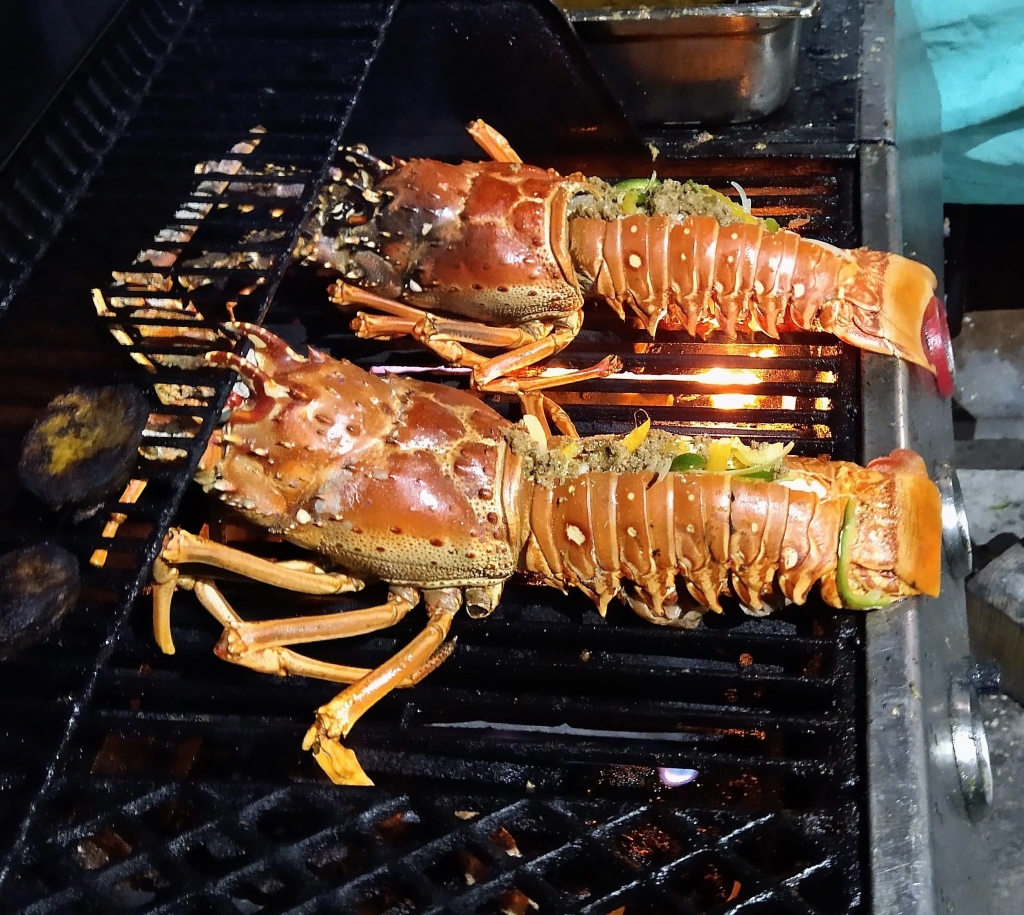
We went on Friday when it is the busiest but it now takes place every day of the week.

Gill met a giant.

We decided on the 7th of January to move back up the island but first Claire and I wanted to snorkel in the marine park where there were several wrecks that had been sunk to make an artificial reef. Mike dinghy’d us over and tied to a mooring buoy, unfortunately in the rain, while Claire and I jumped in. We got to see turtles feeding on the sea grass and swam over the wrecks which were teeming with sea life. The visibility wasn’t great and the pictures I managed to take were out of focus due to the light reflecting off the suspended particles and the camera focusing on the particles.camera f
We upped anchor at 1pm and anchored off the beach at Reeds Bay, Lower Carlton at 3pm. It was a great swimming beach with plenty of beach bars to chose from. We could have anchored at pretty much any of the bays along the coast but were happy with where we were.


Gill and I went ashore for something to eat and a couple of drinks. We decided to go to Simones as her menu seemed to have more of what we like. Unfortunately she was just shutting up because a coach party had taken most of the food she had. We were about to turn away when she offered to cook us burger and fries and give us a couple of beers while we waited. She even set up a table for us next to the sea. With service like that we couldn’t really refuse and the food was excellent.
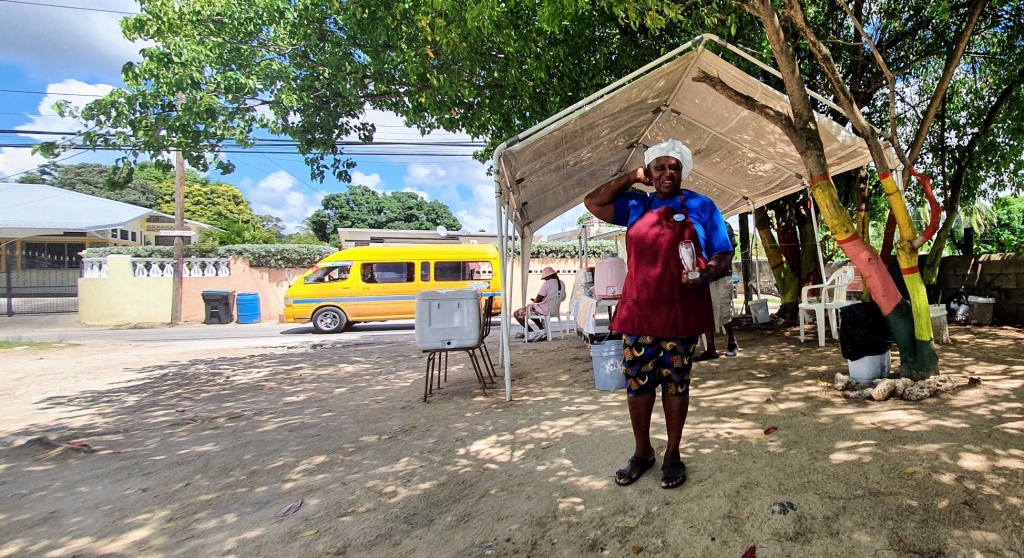
After a couple of days here we decided to move back up to Port Saint Charles easy to check out and sail up to Martinique. We had a couple of days and walked to Speightstown, the nearest town to the anchorage. It had decent supermarkets and nice restaurants along the front. It’s possible to take your dinghy along or anchor off but the walk isn’t far.


We cleared out with customs and immigration in the morning as you have to pay port dues while the office is open and take the receipt to customs. You then have 24 hours to leave.
We had a meal at Pier One, a huge pizza, as we needed to spend our remaining money because you are not allowed to take Barbadian currency out of the country. The pizza was superb and enough to take half each back for a snack on the overnight sail to Martinique.

We had a great final afternoon around the pool and beach before raising anchor at 5pm on the 11th of January 2023 for the 90 mile sail to St Anne, Martinique.

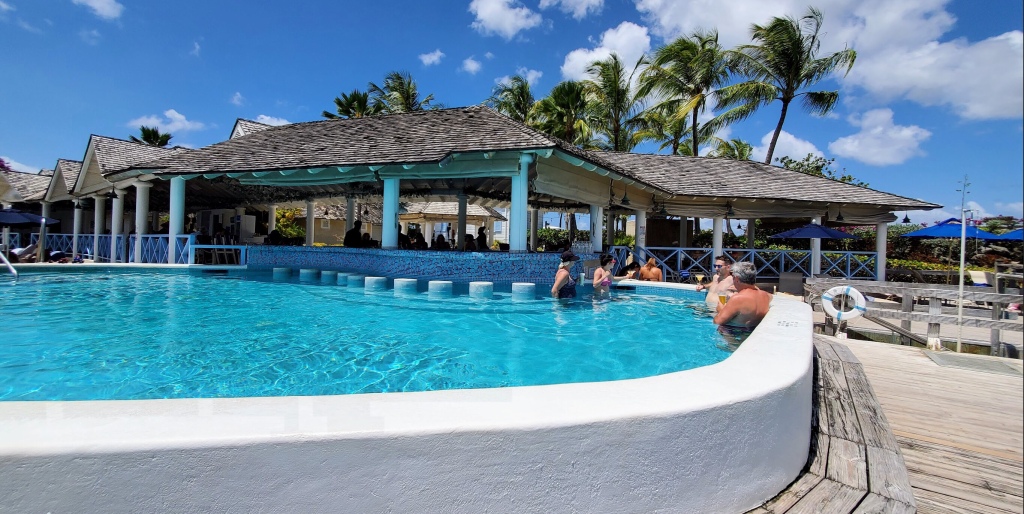

We’d had 3 wonderful weeks on Barbados, our first Caribbean island. It had rained more than I expected but that didn’t really matter because they didn’t last long and everything dried within minutes. The island was very green and lush, maybe the rain had something to do with that. Everyone we met was incredibly friendly and helpful. The bus rides were unforgettable, everyone greeted everyone when getting on and off the buses, the music was loud and the drivers were in a hurry – we loved them. We were completely relaxed after our crossing and looking forward to experiencing the other islands

